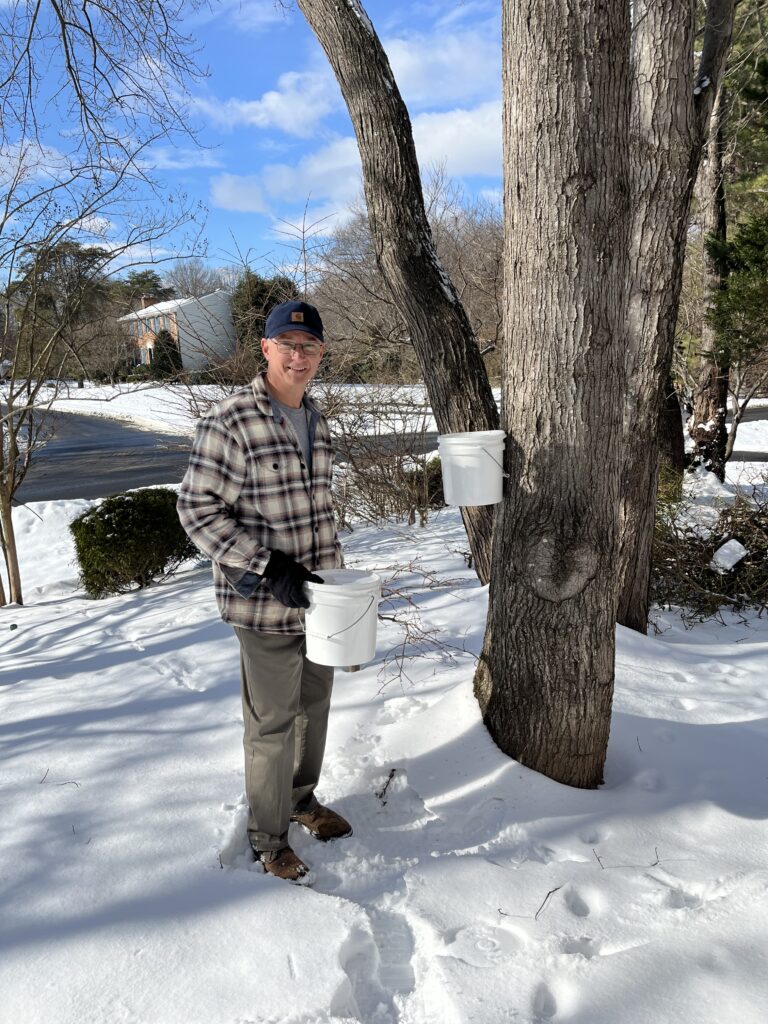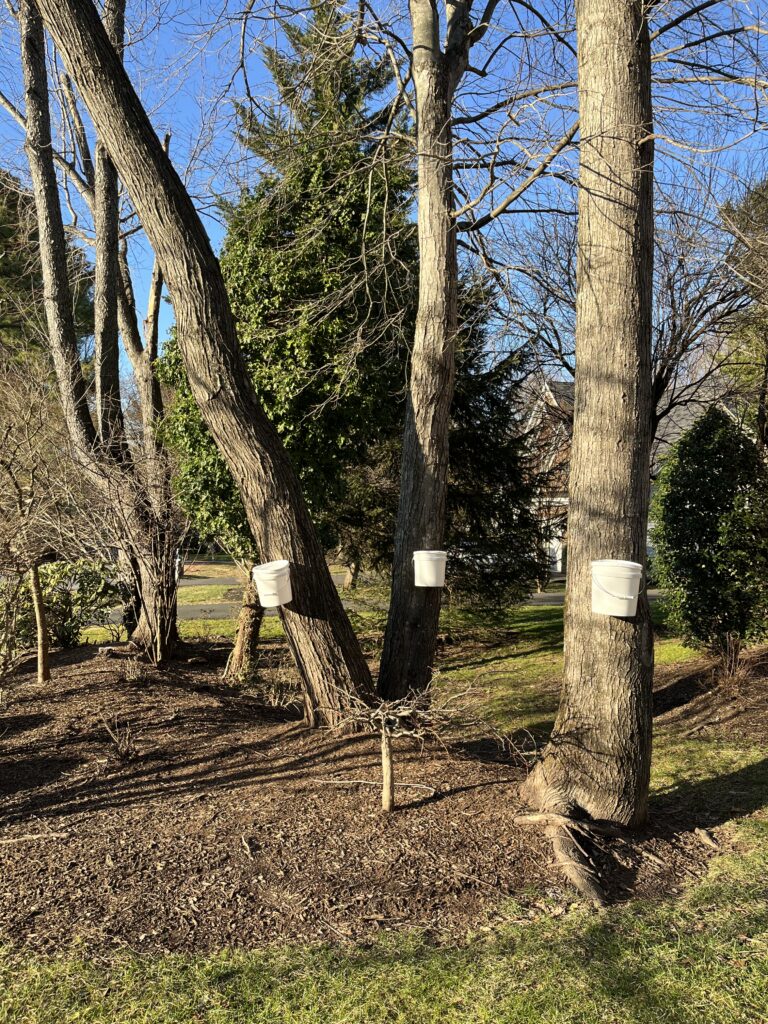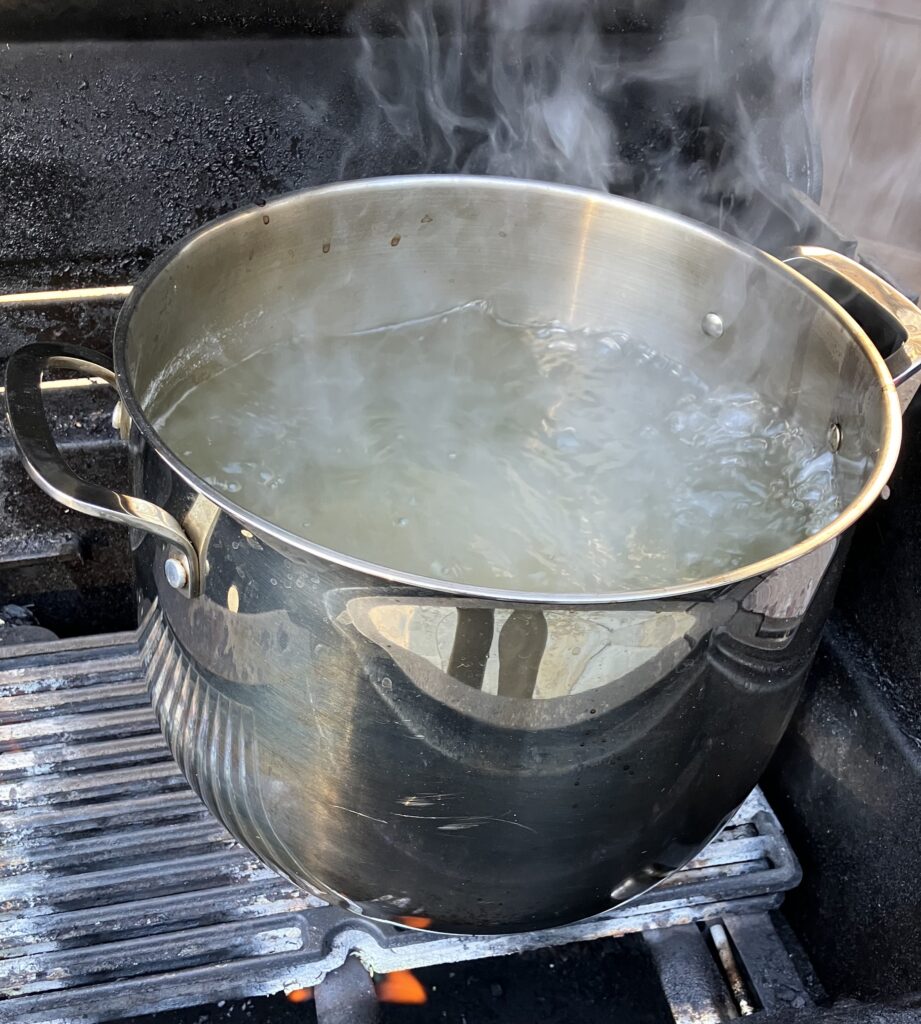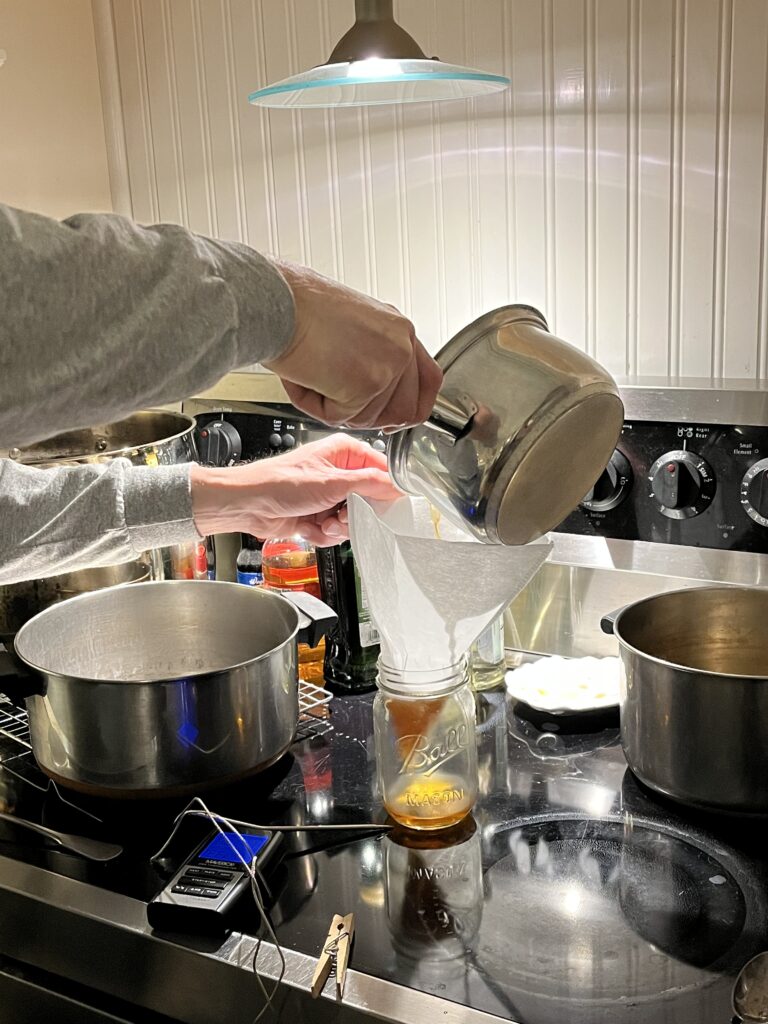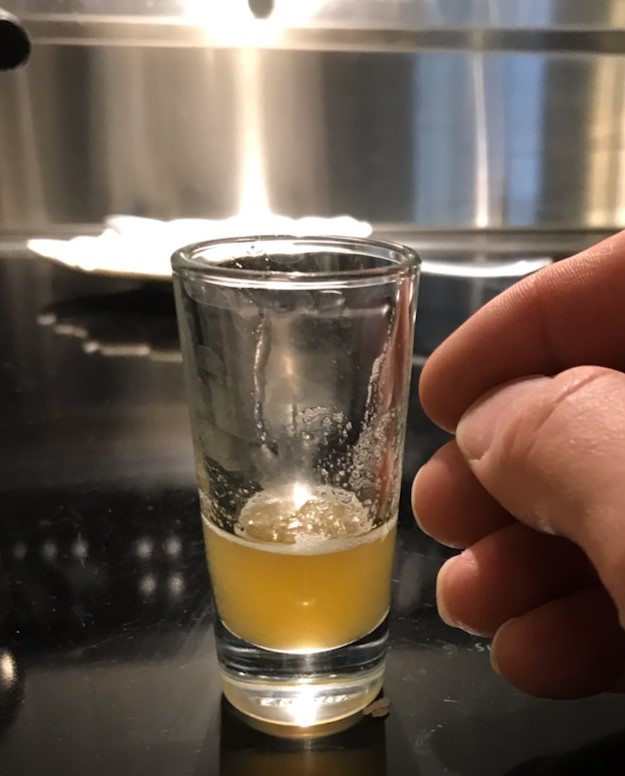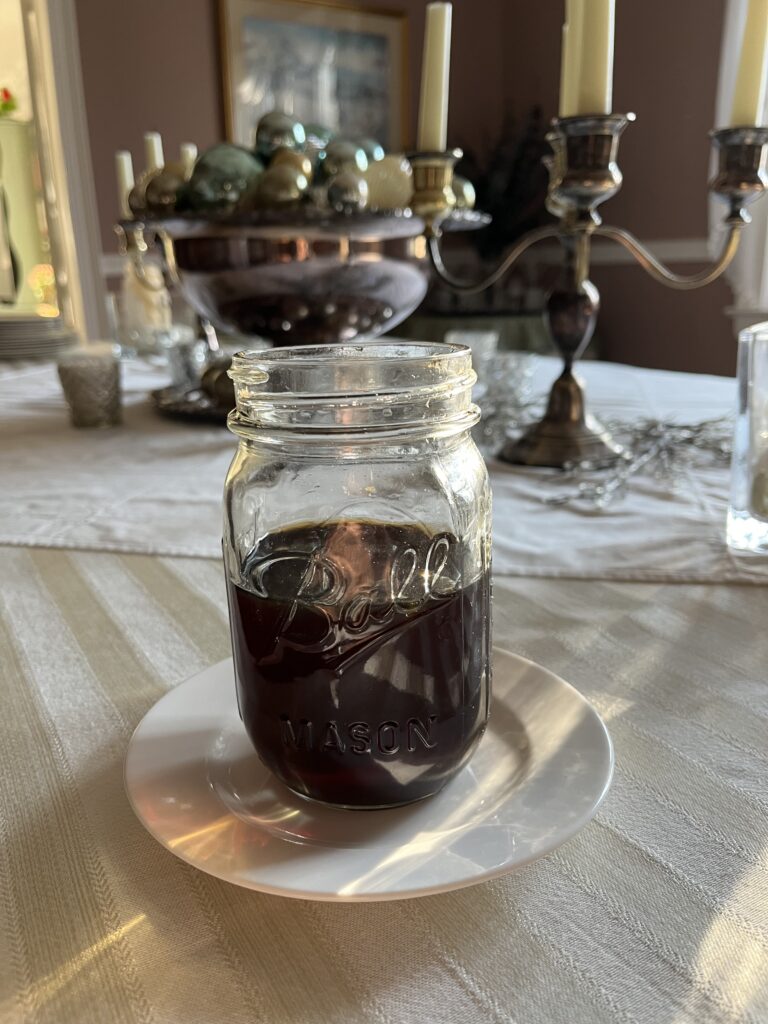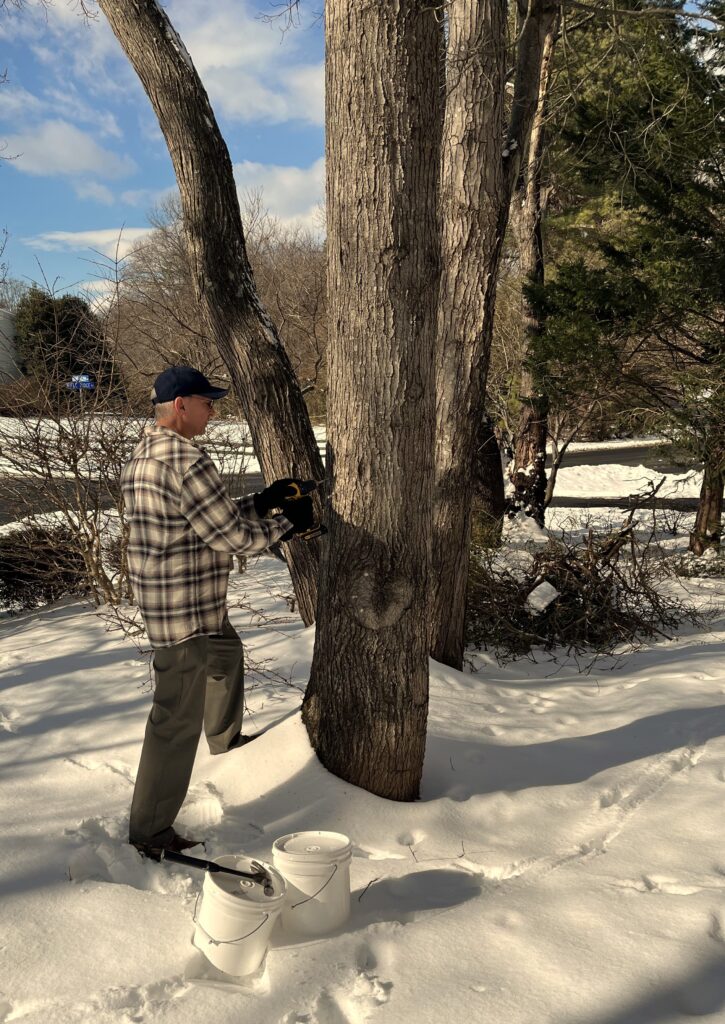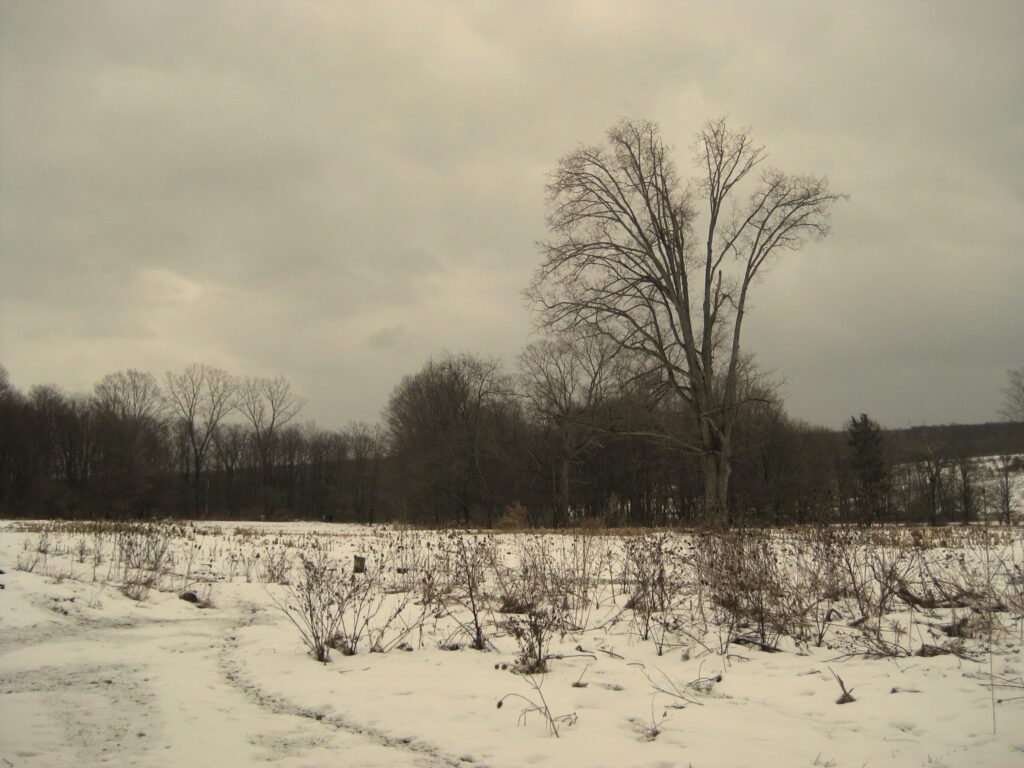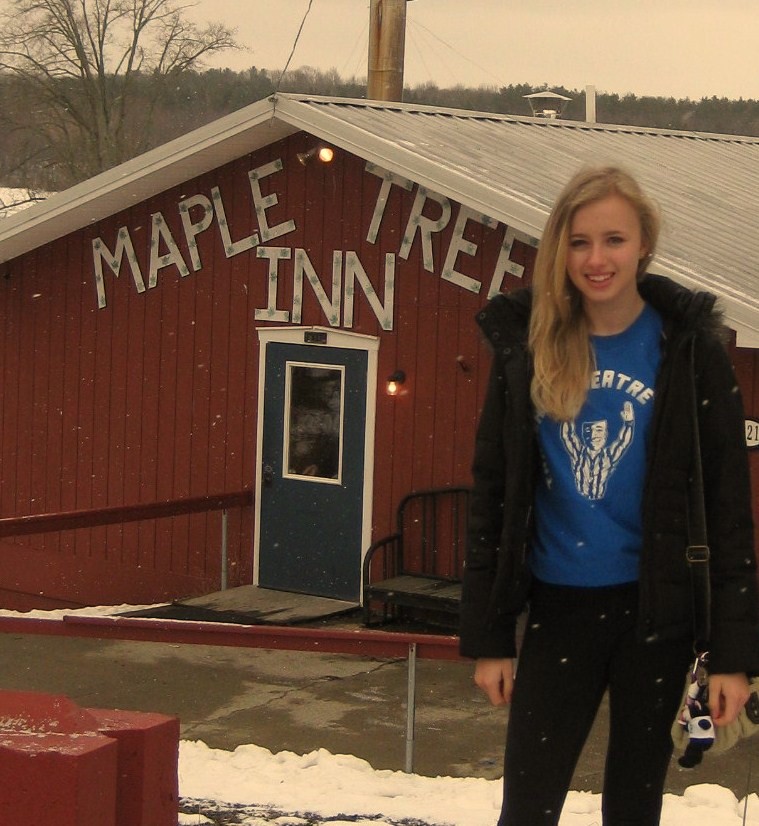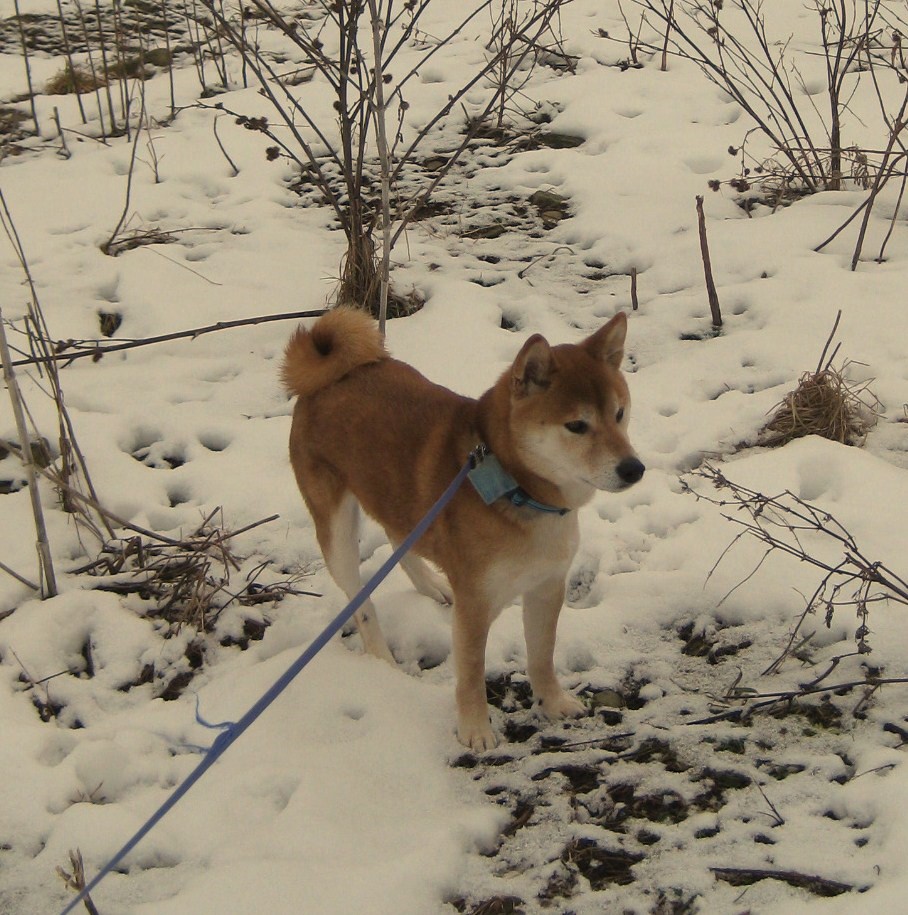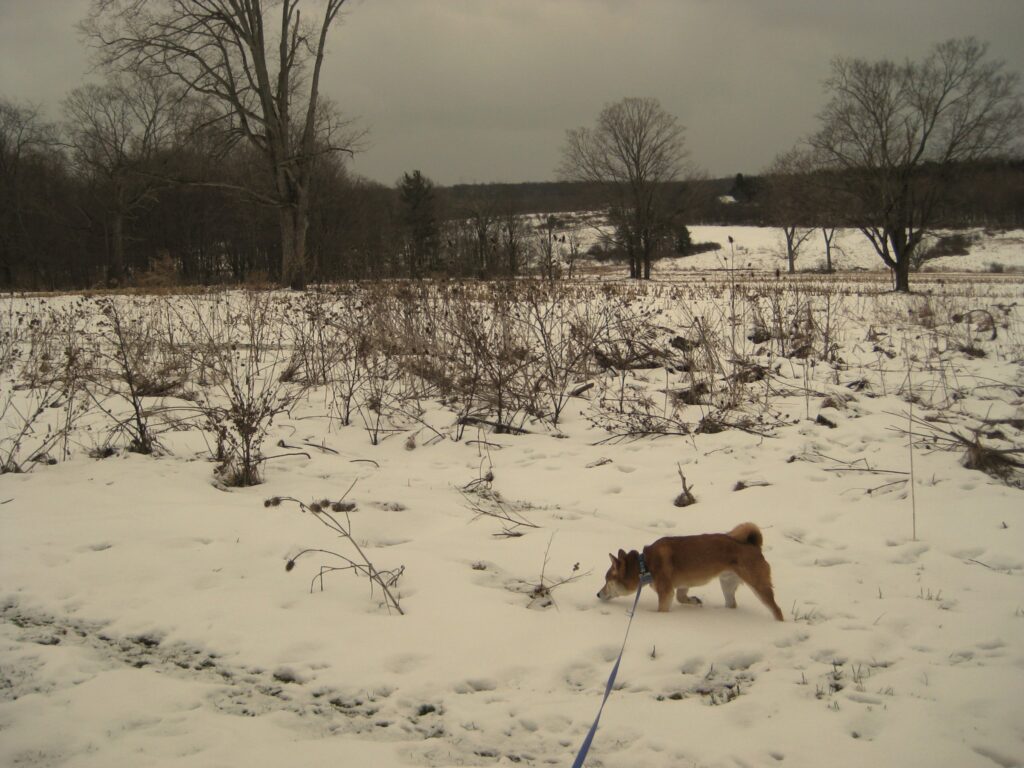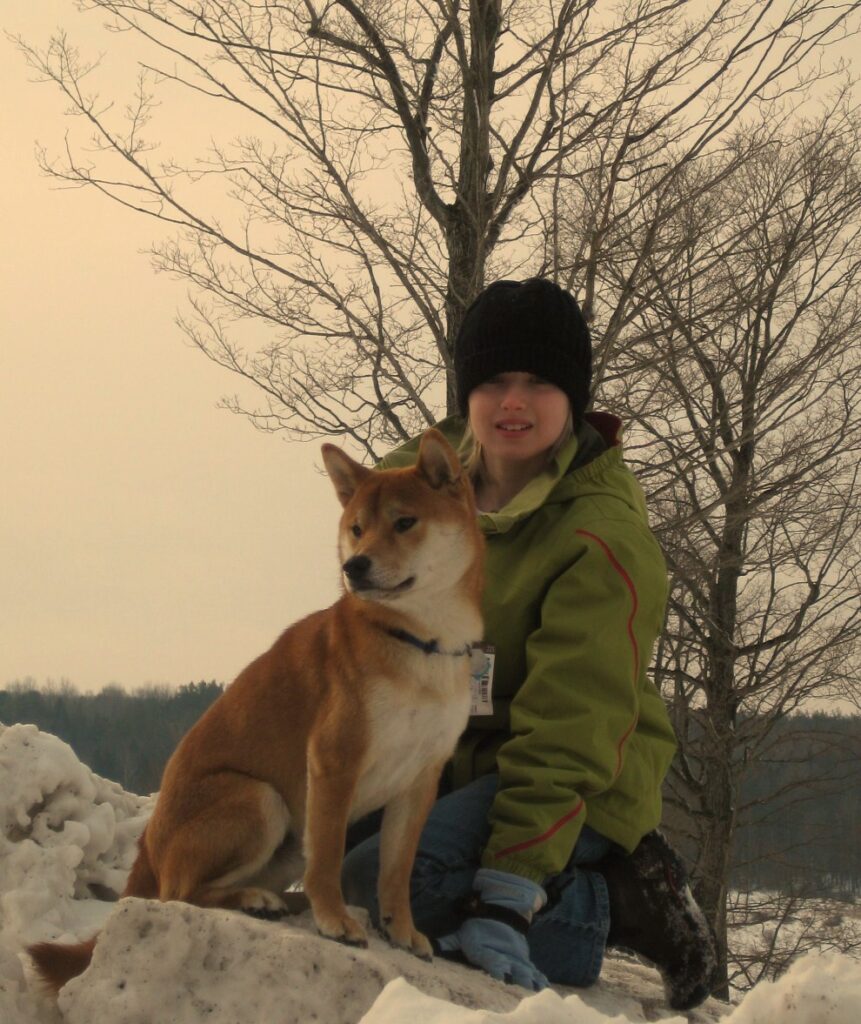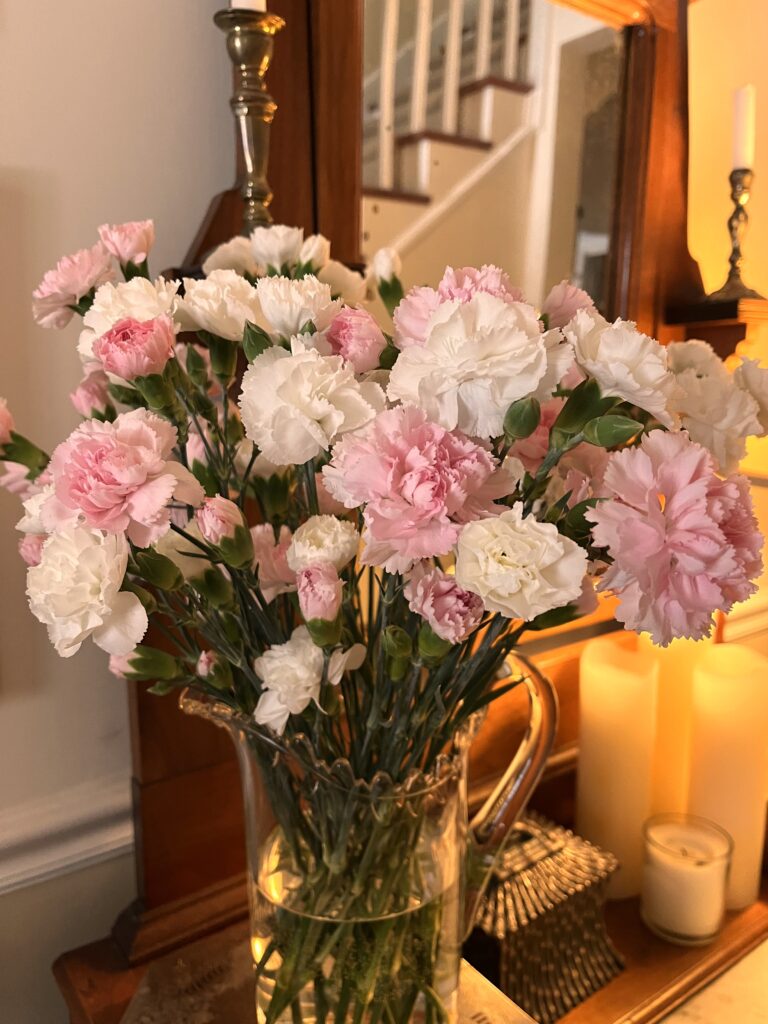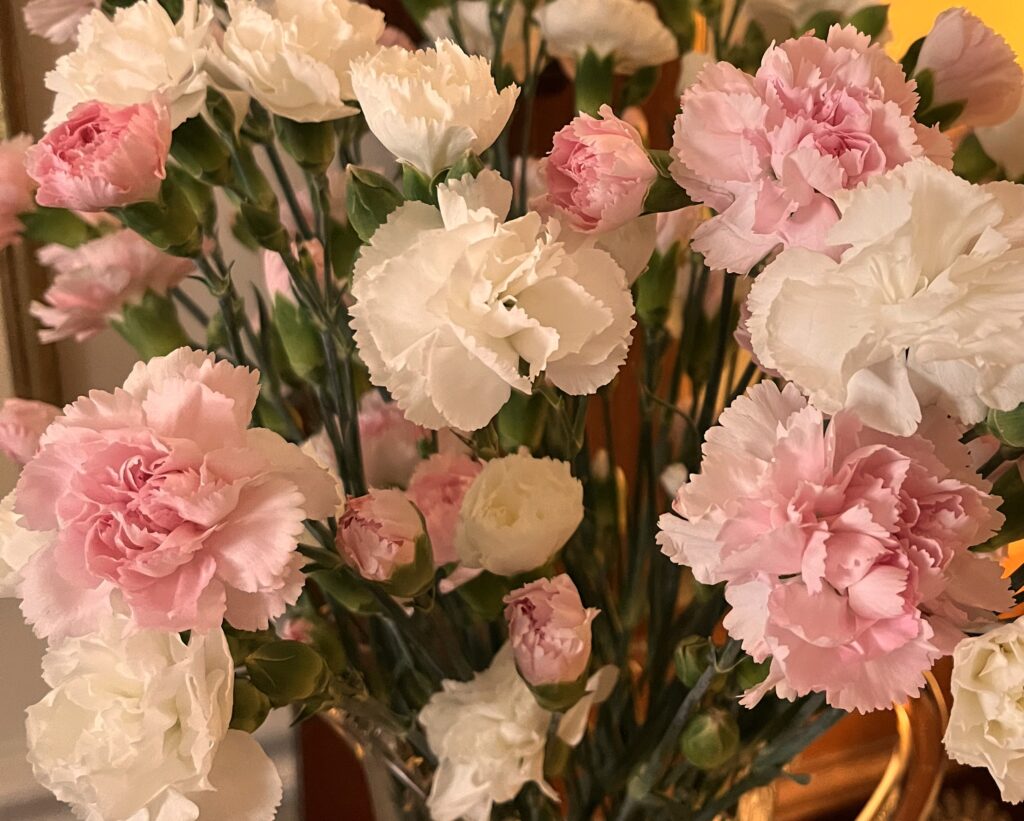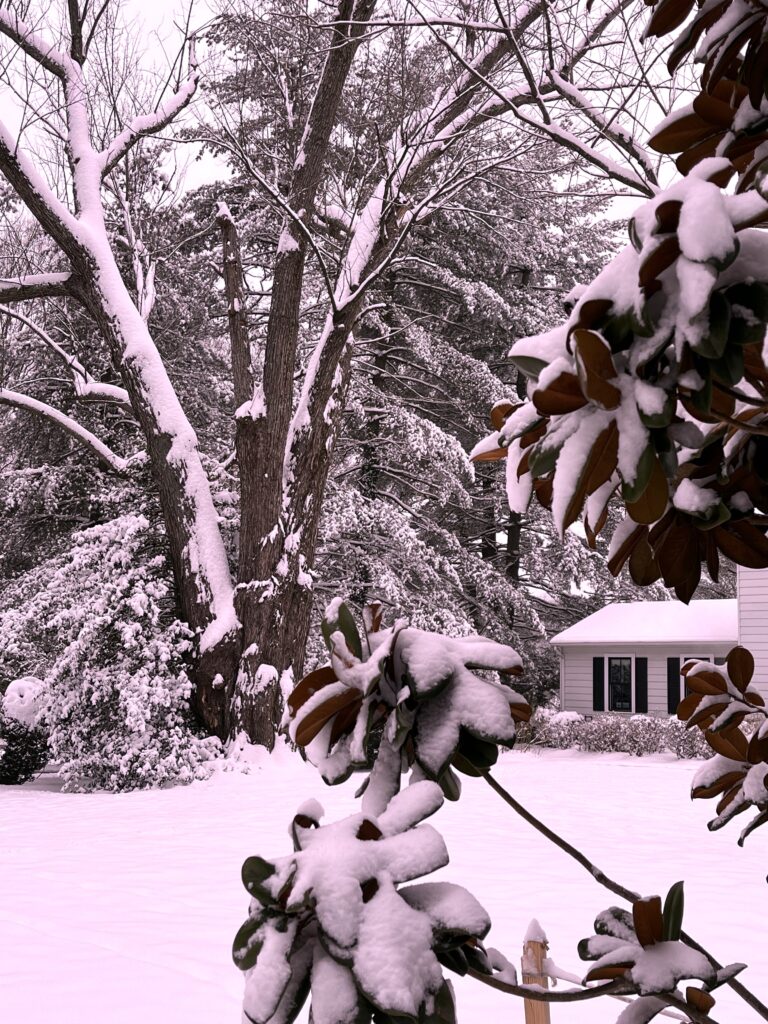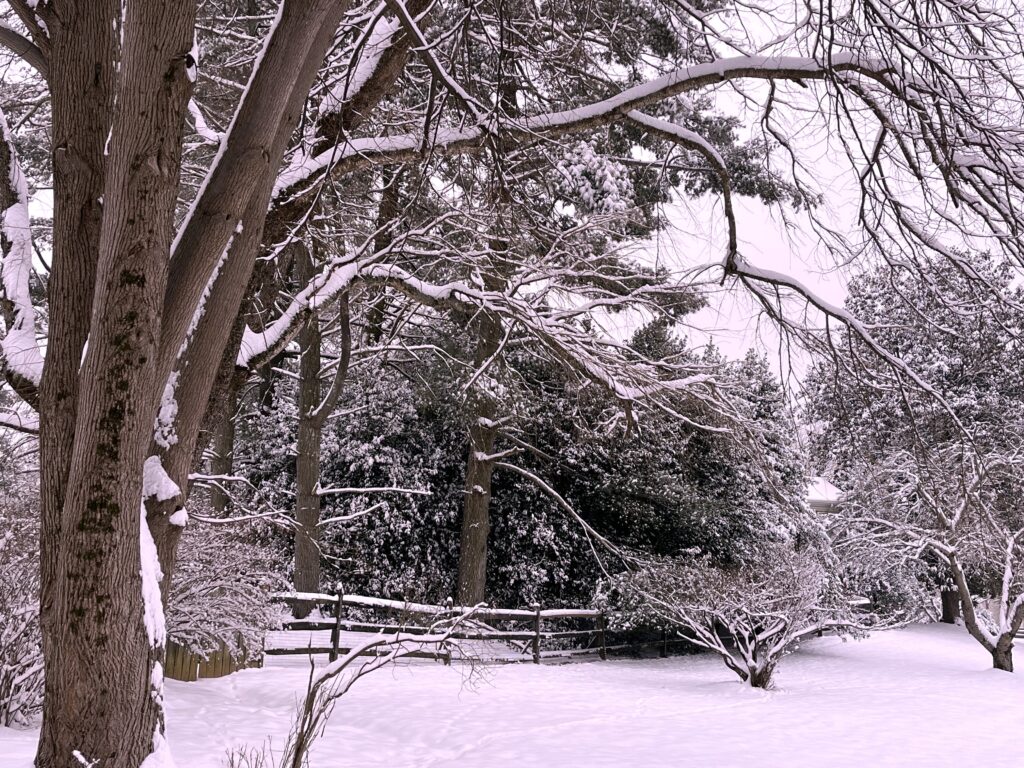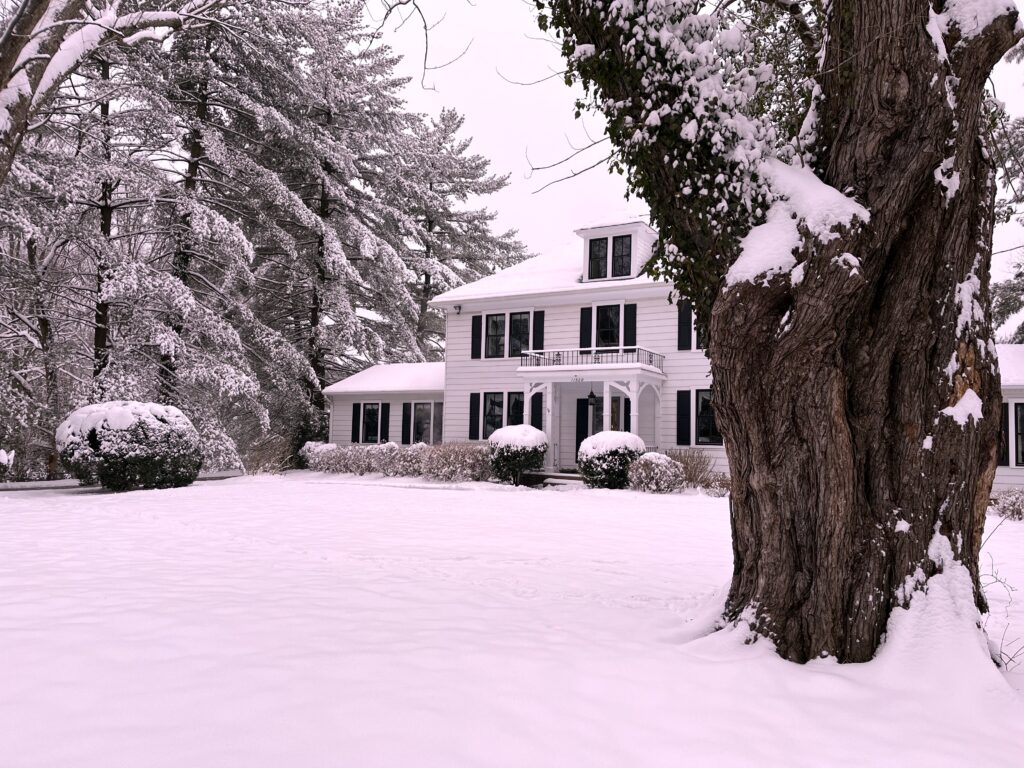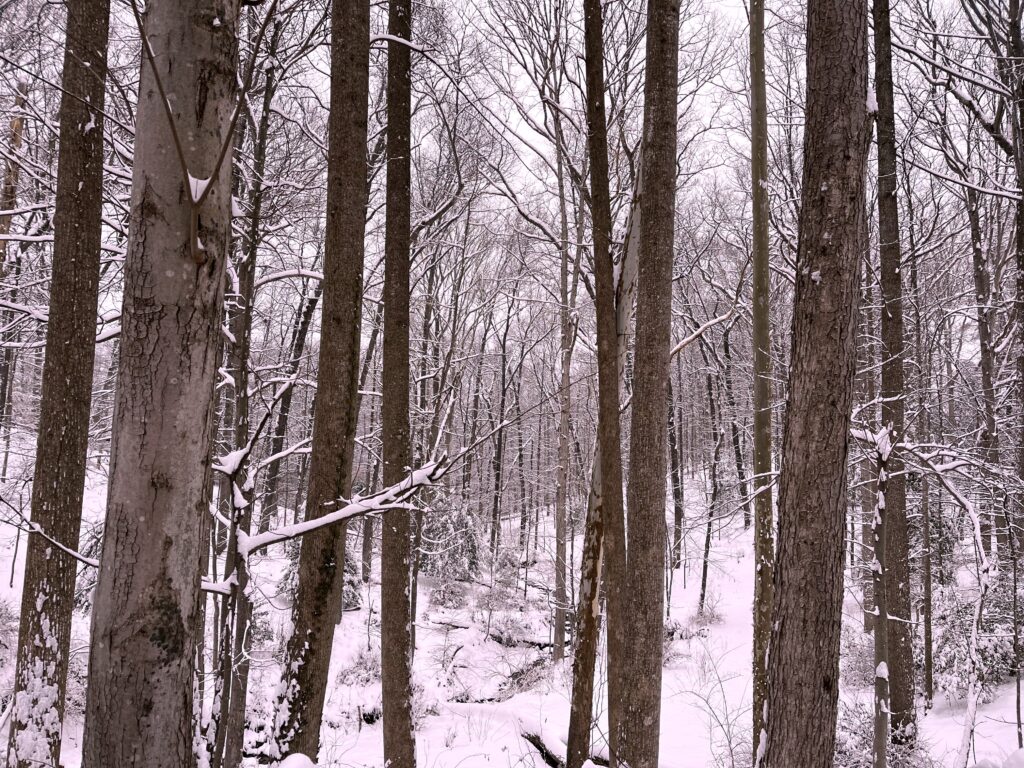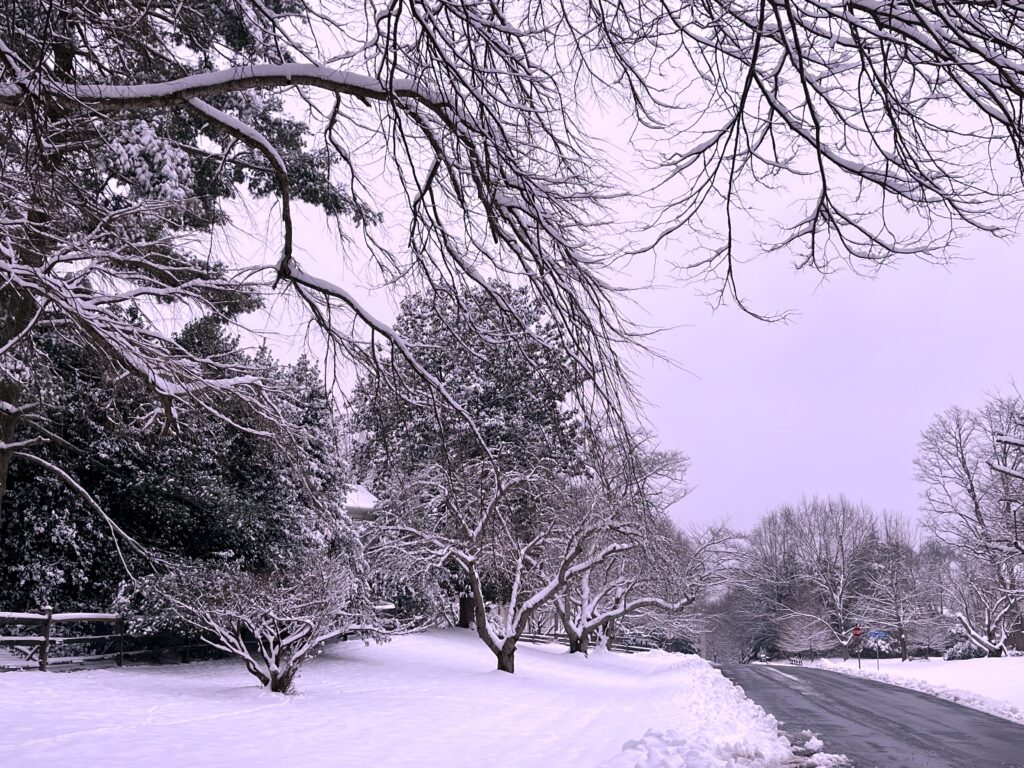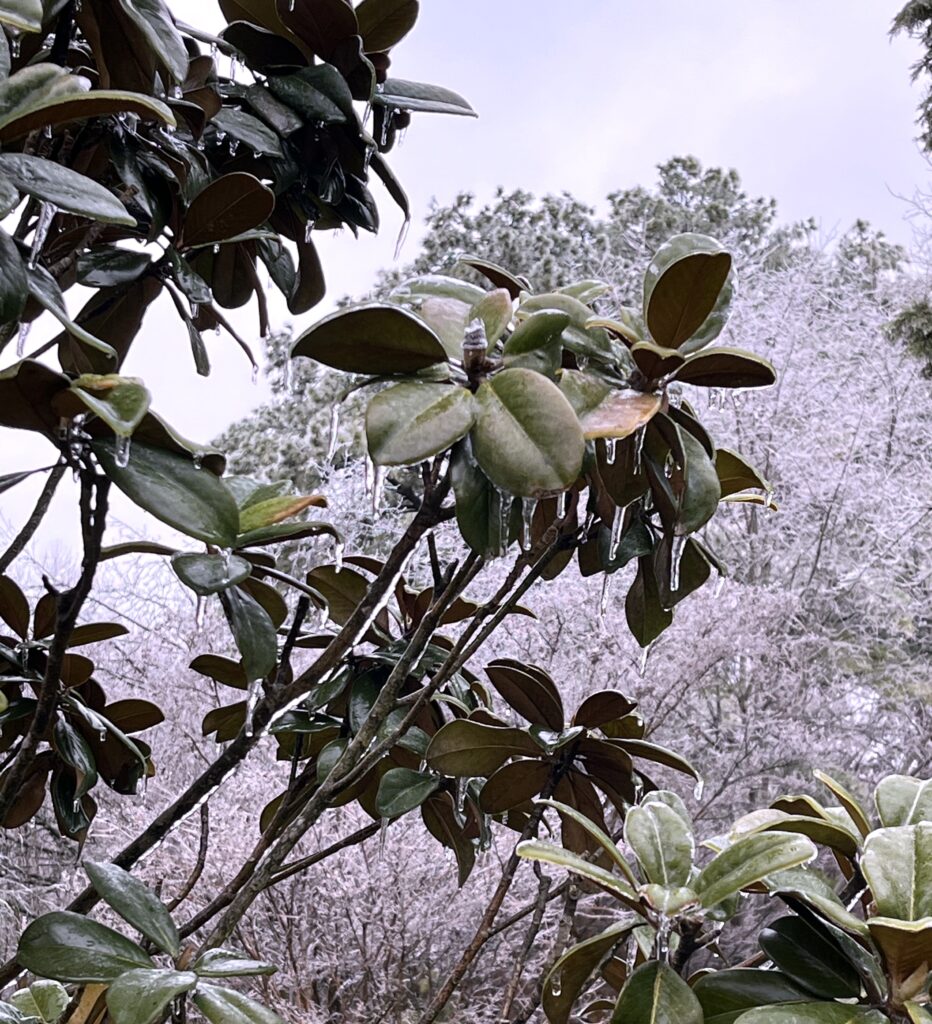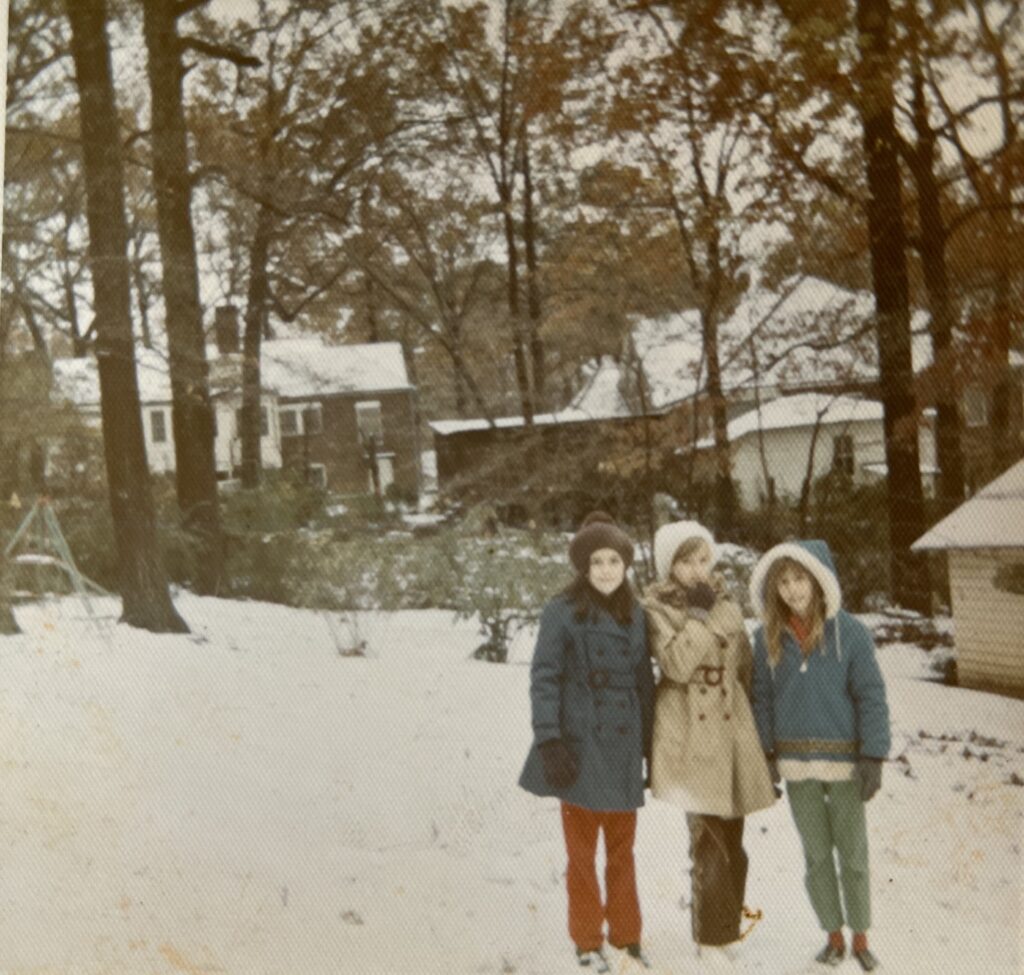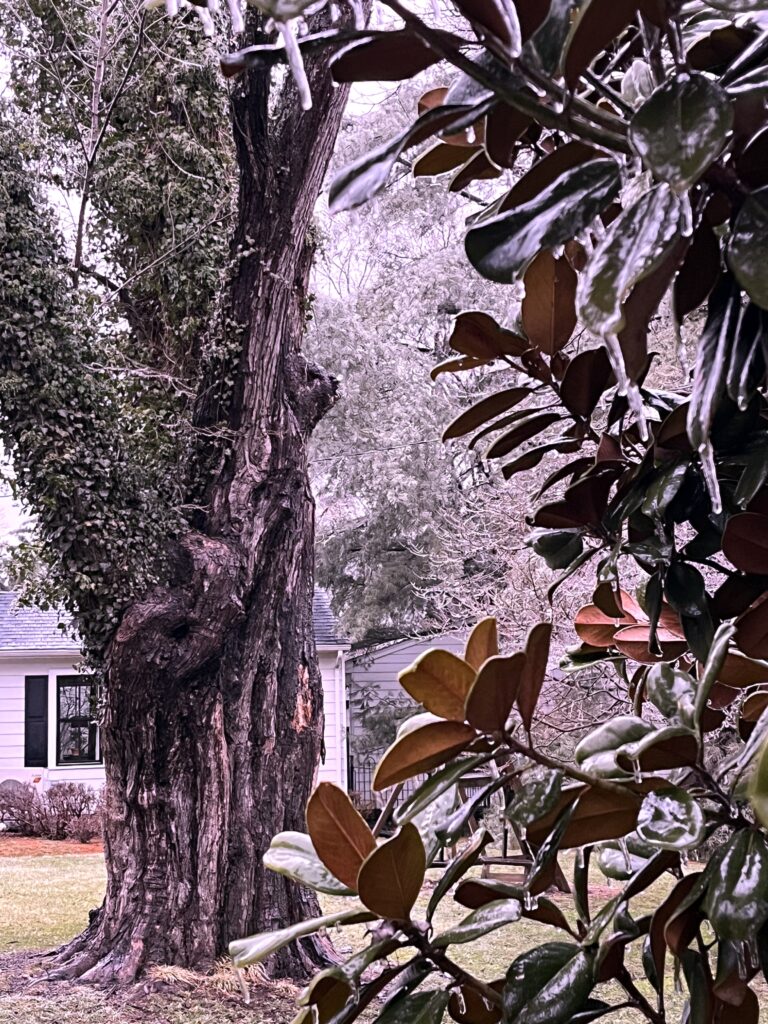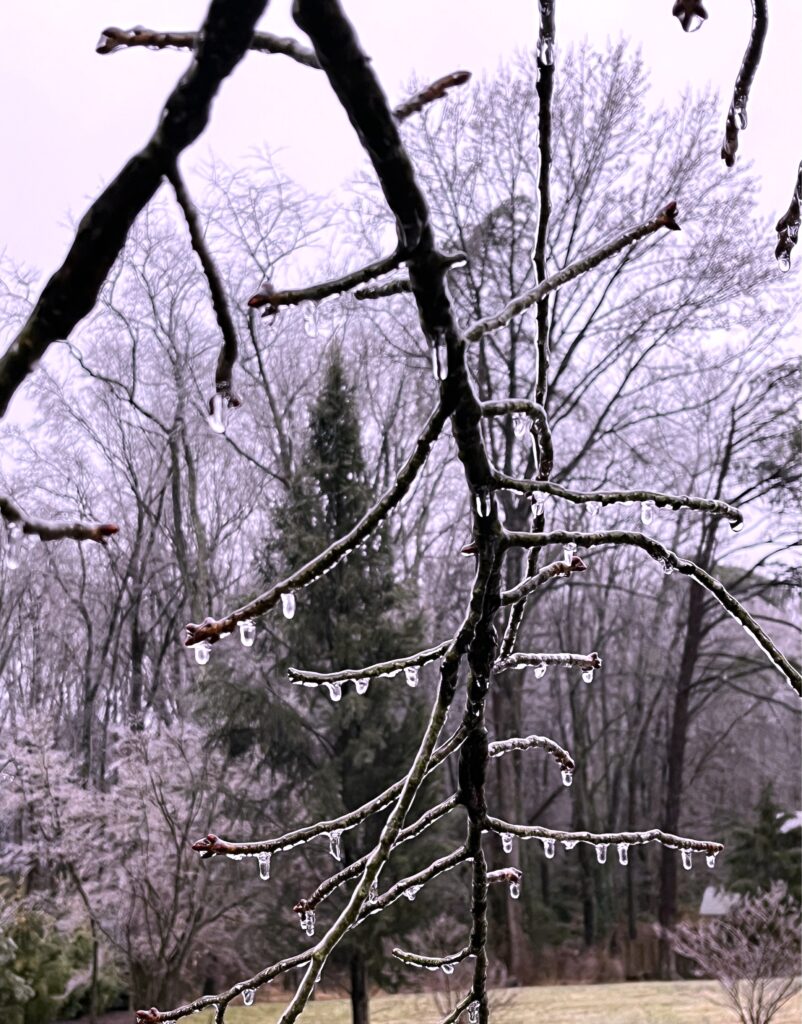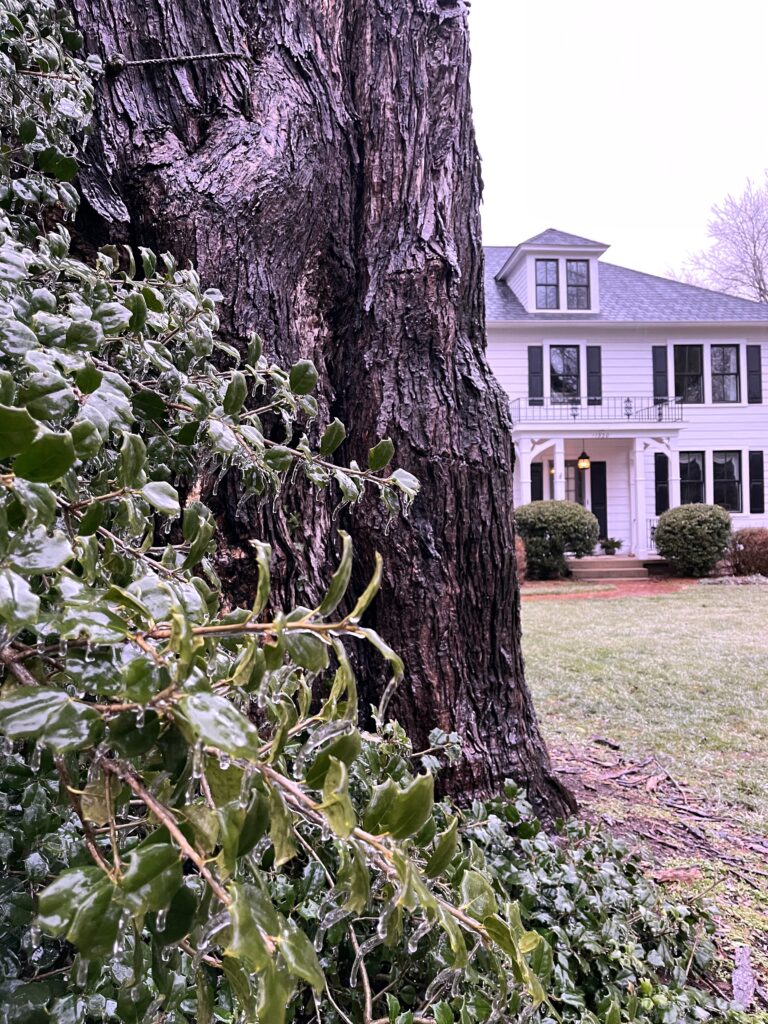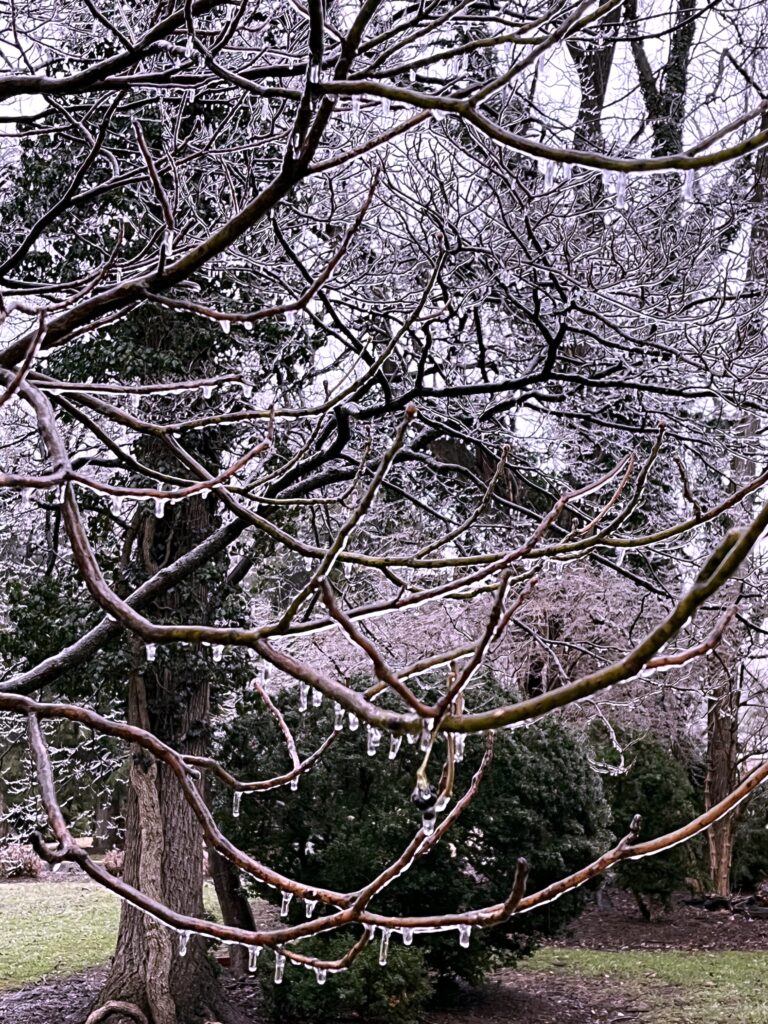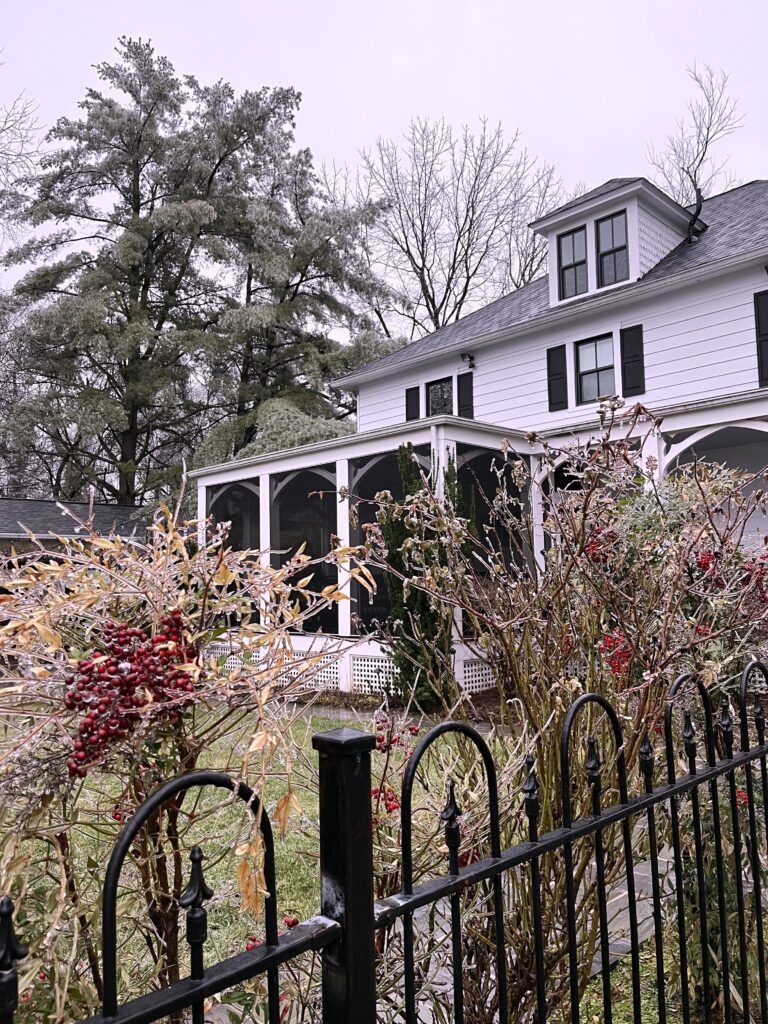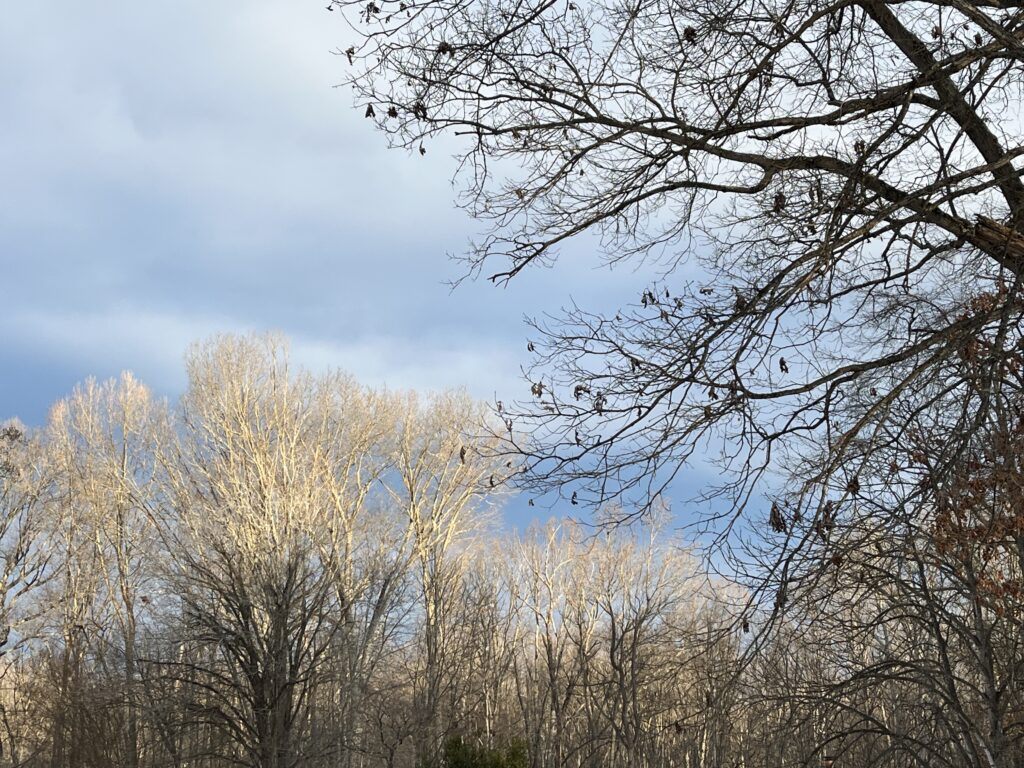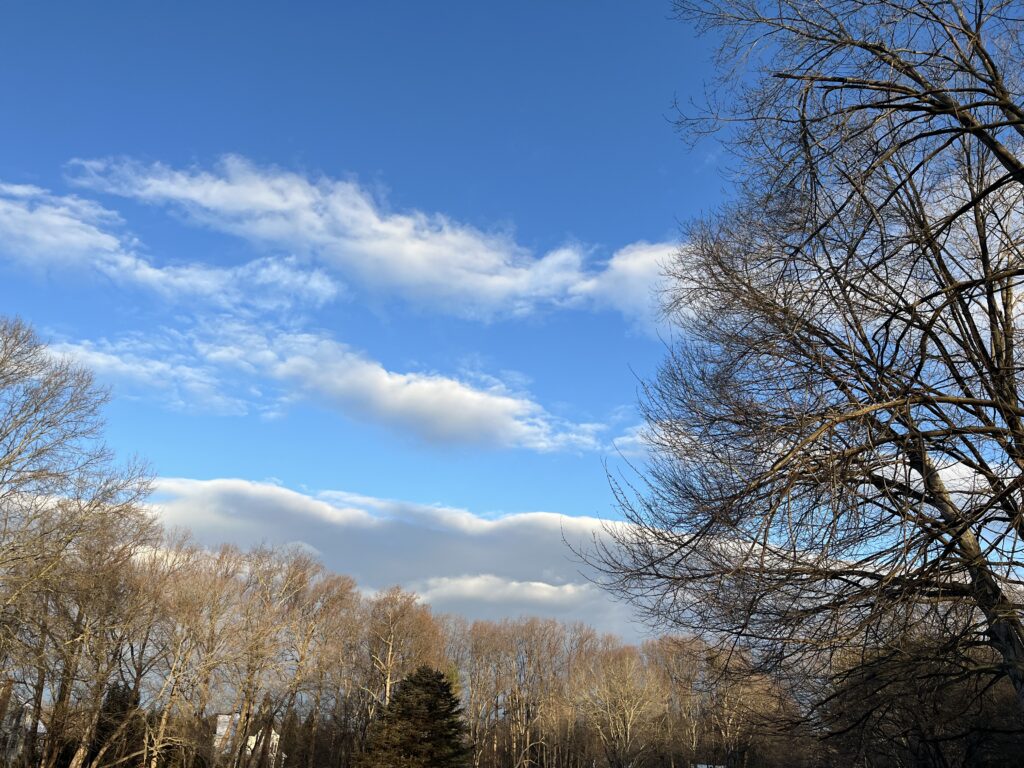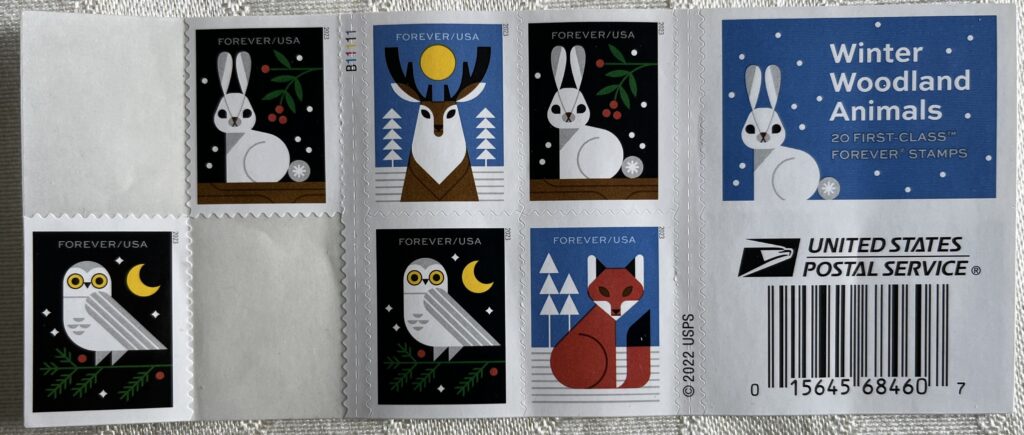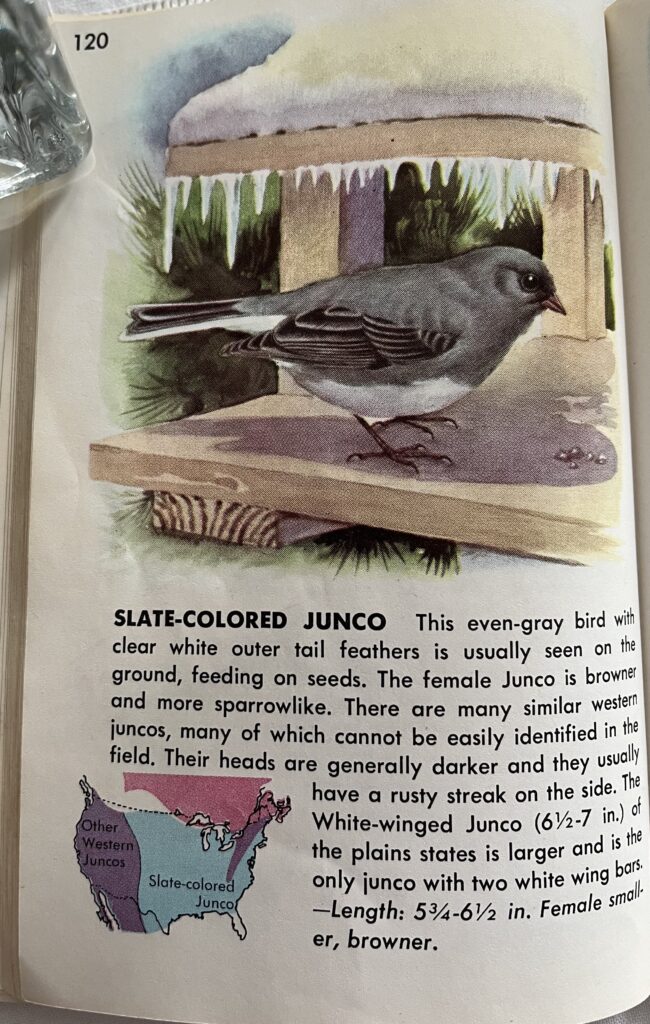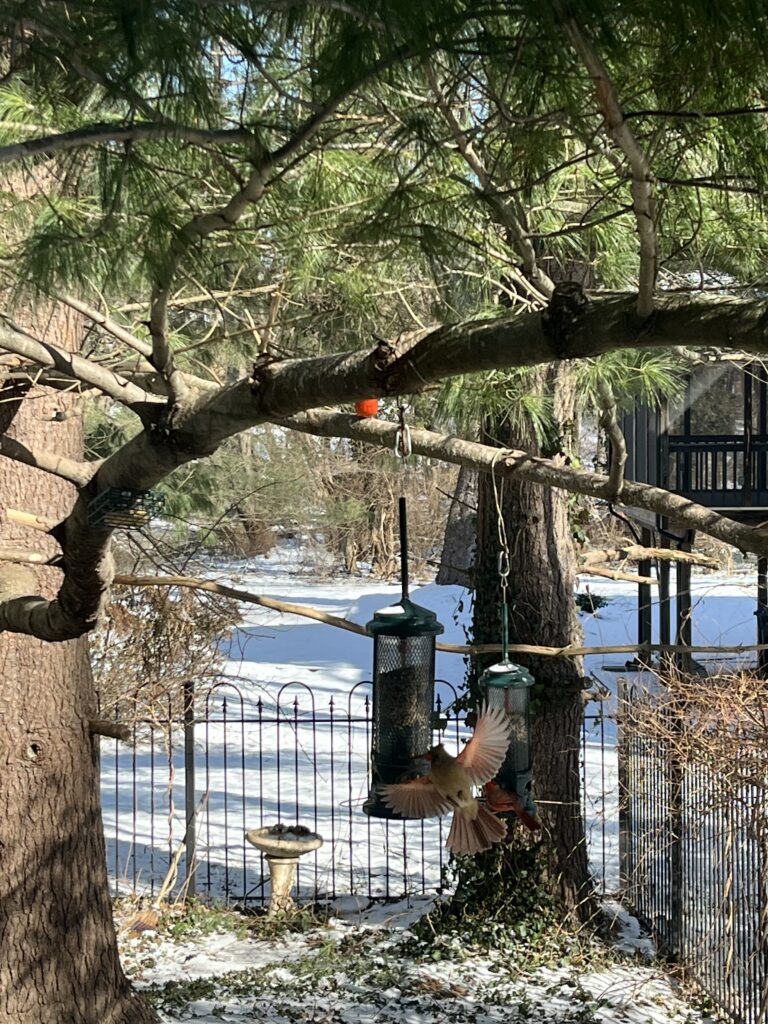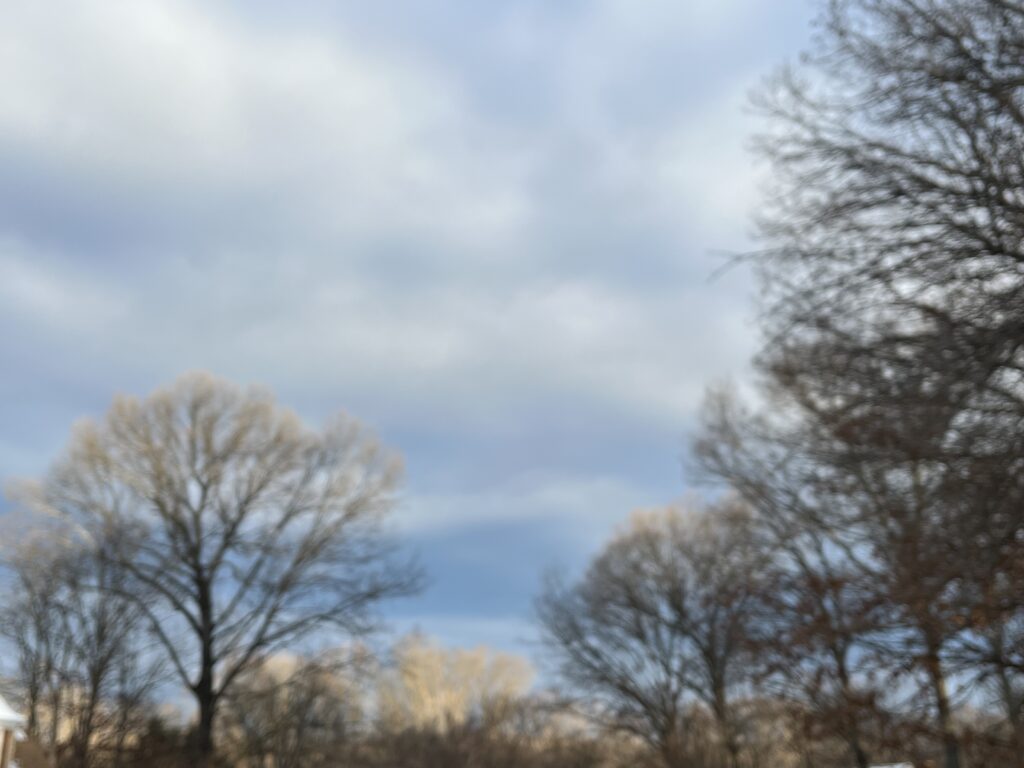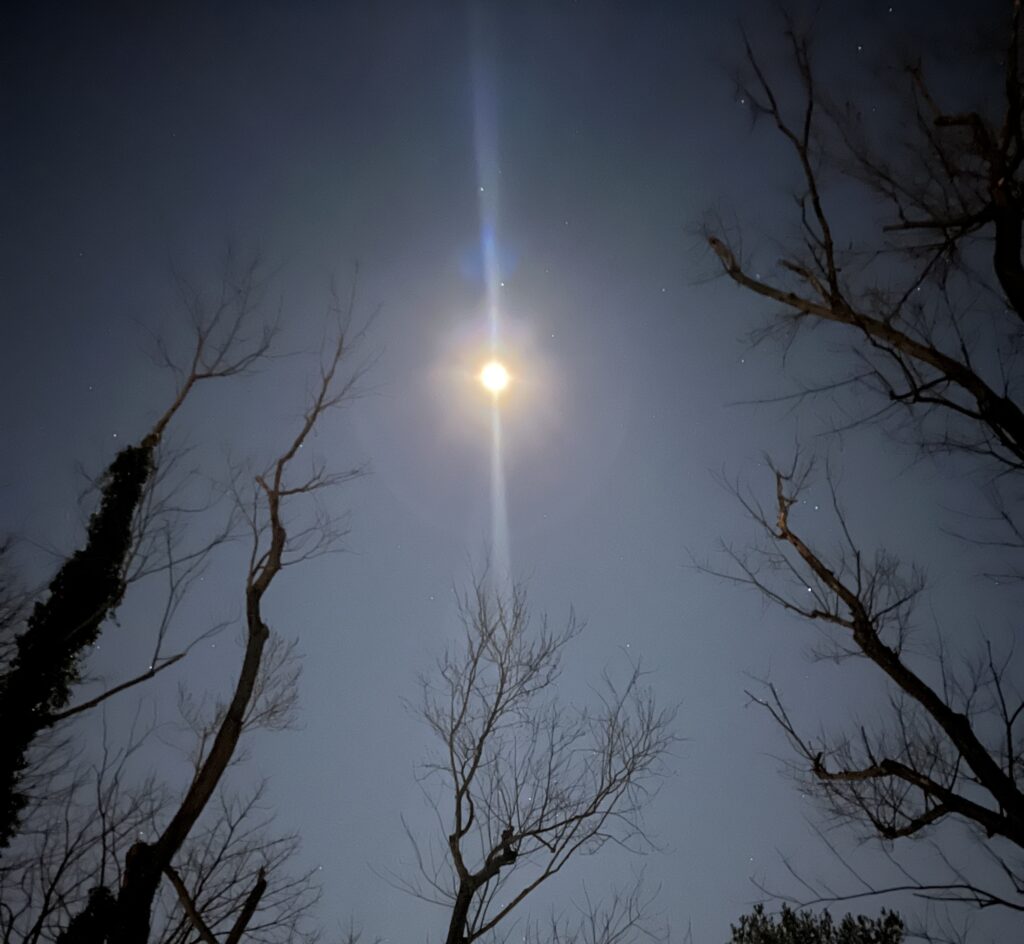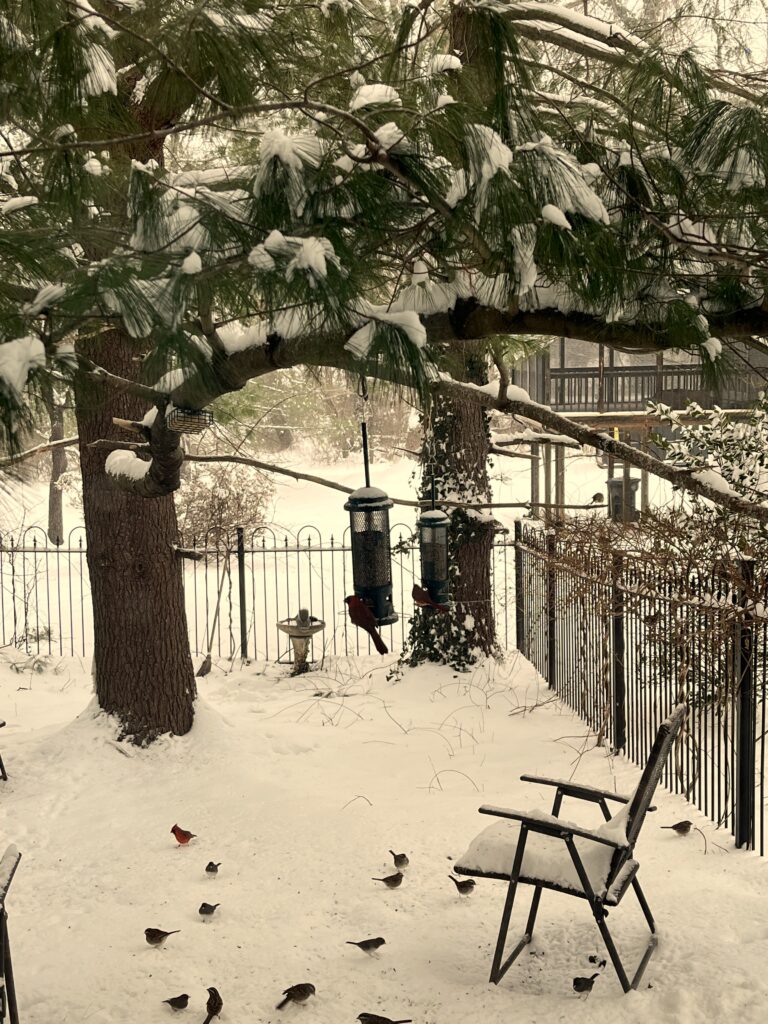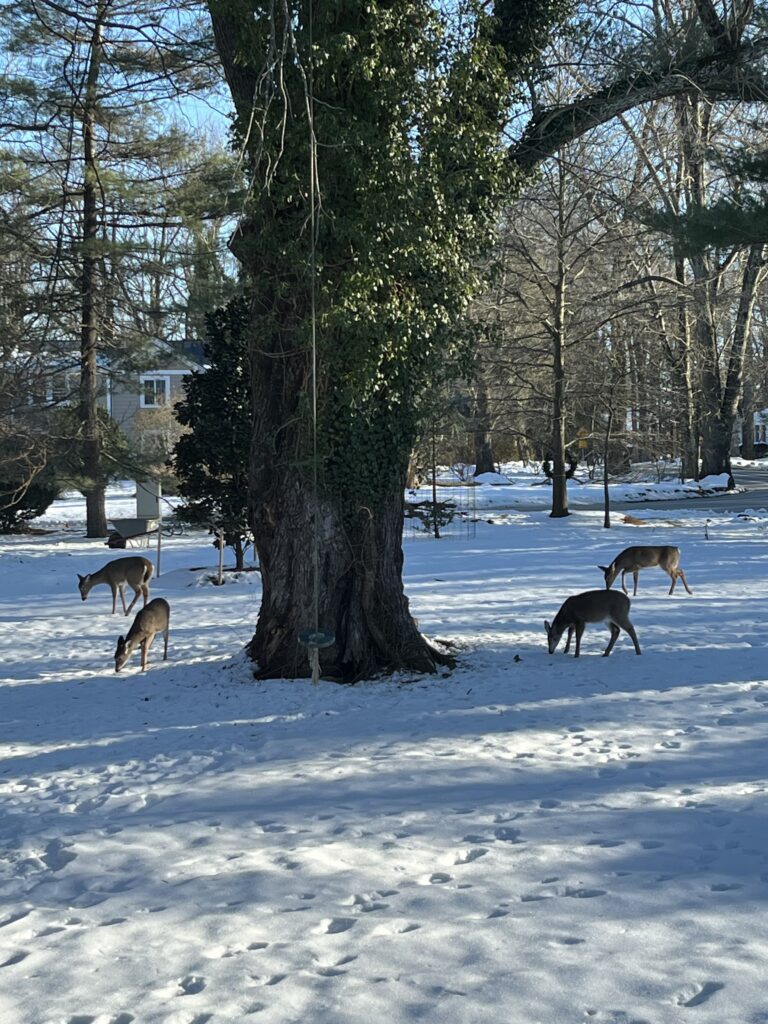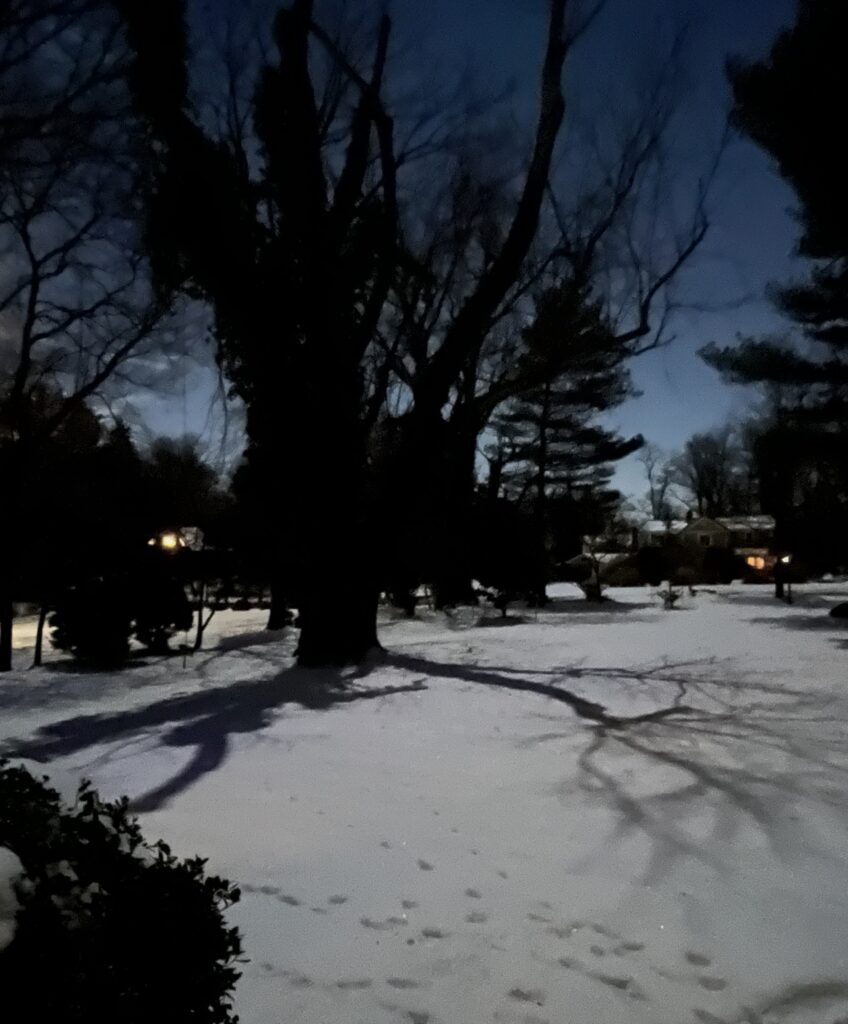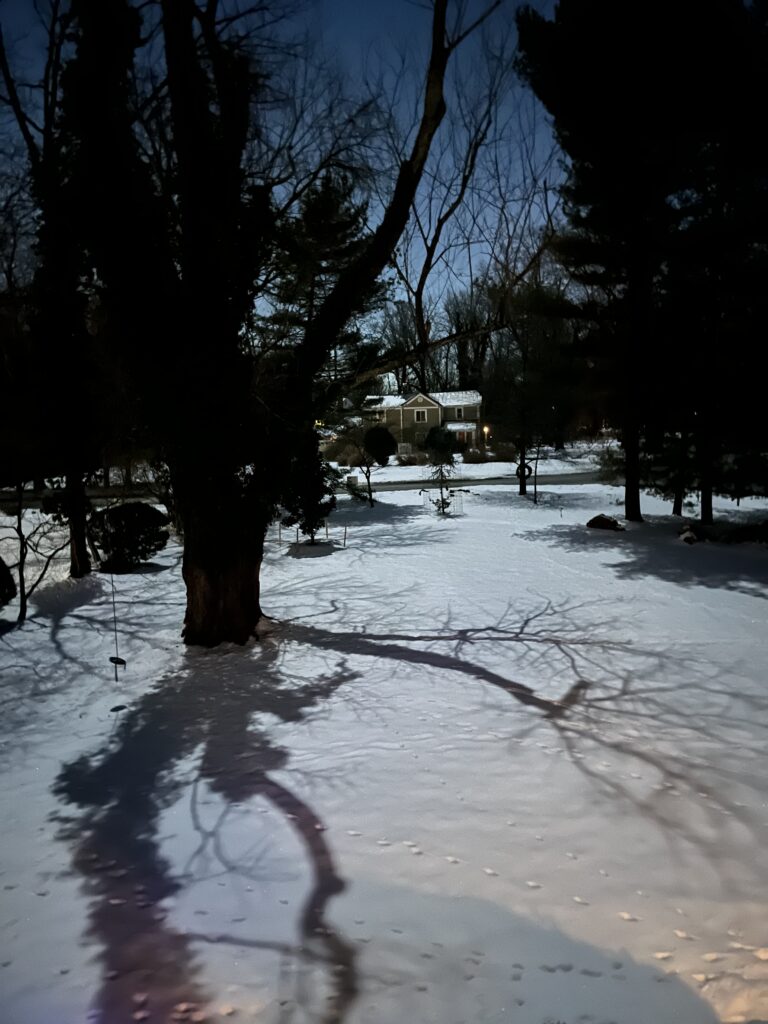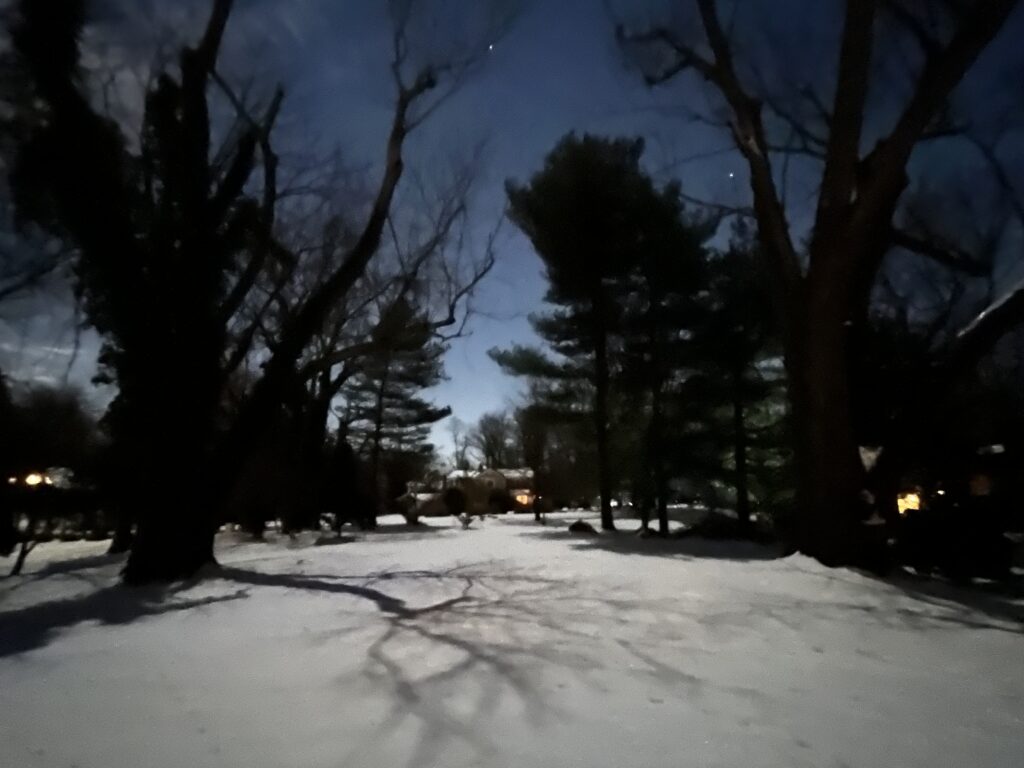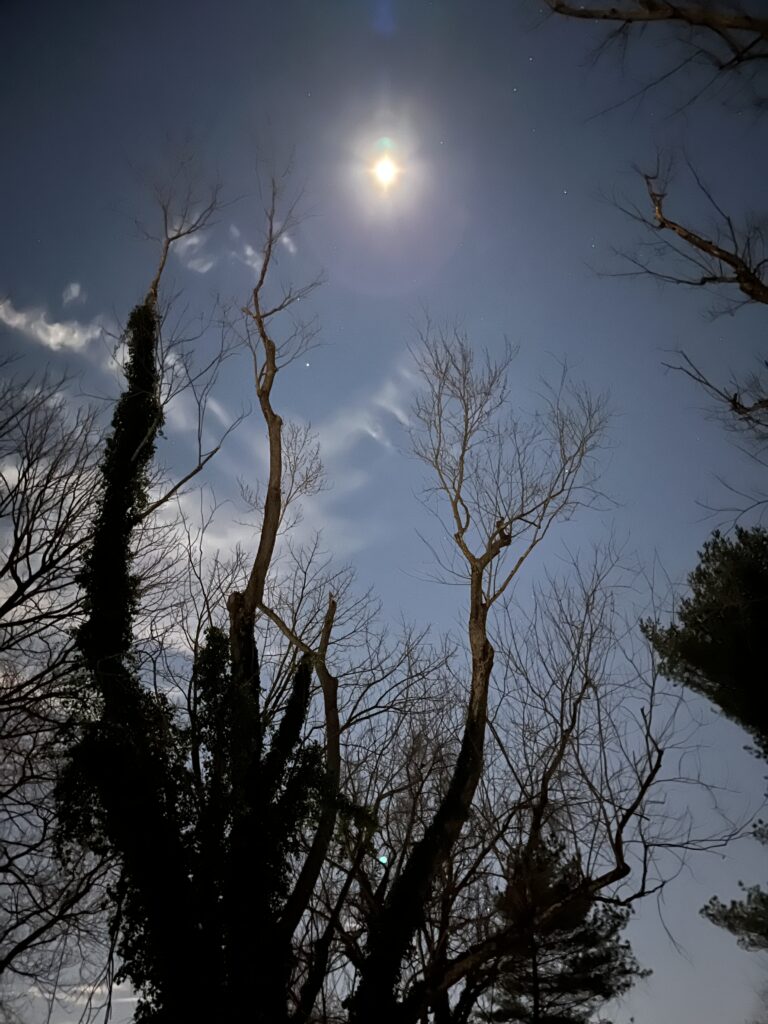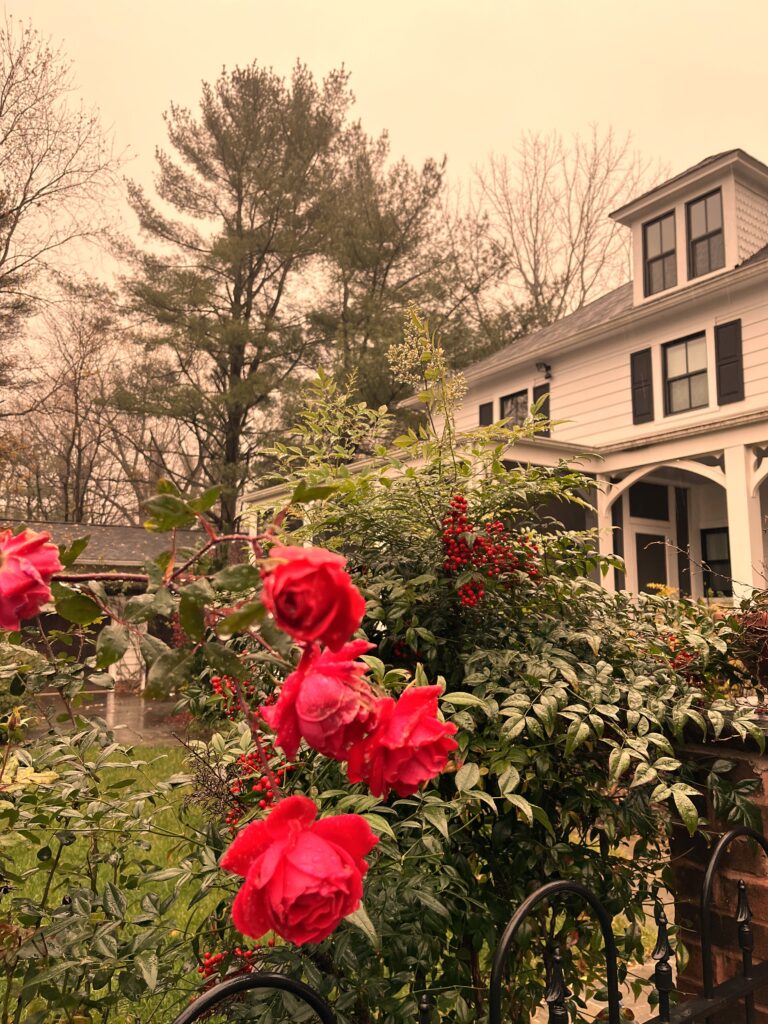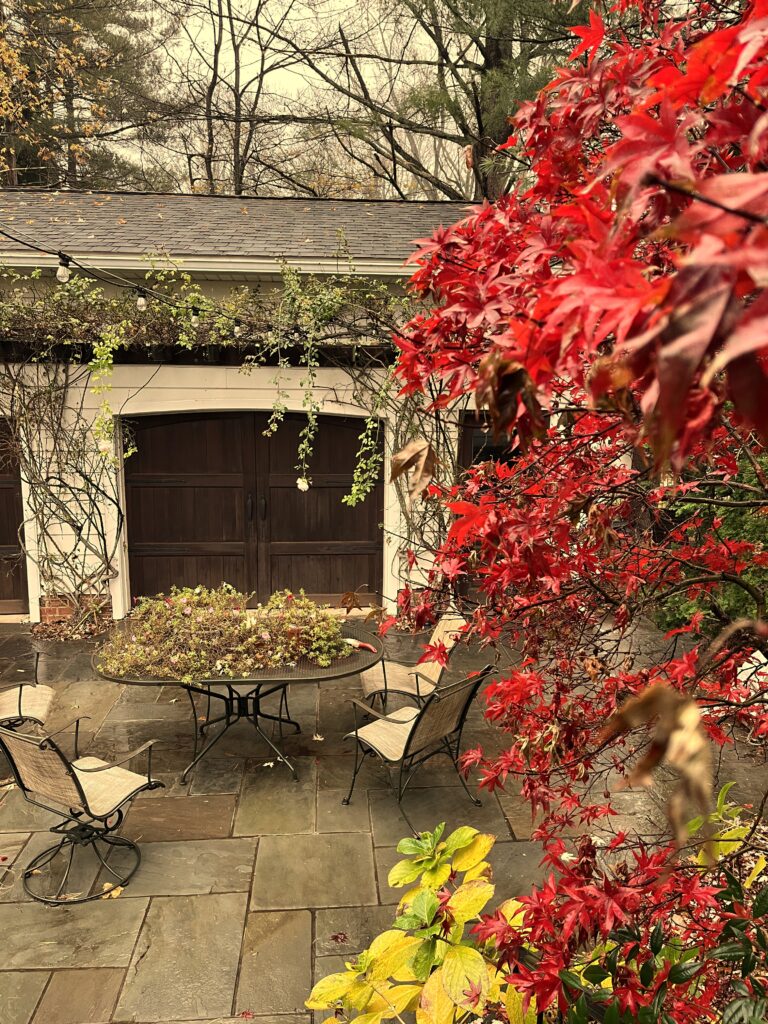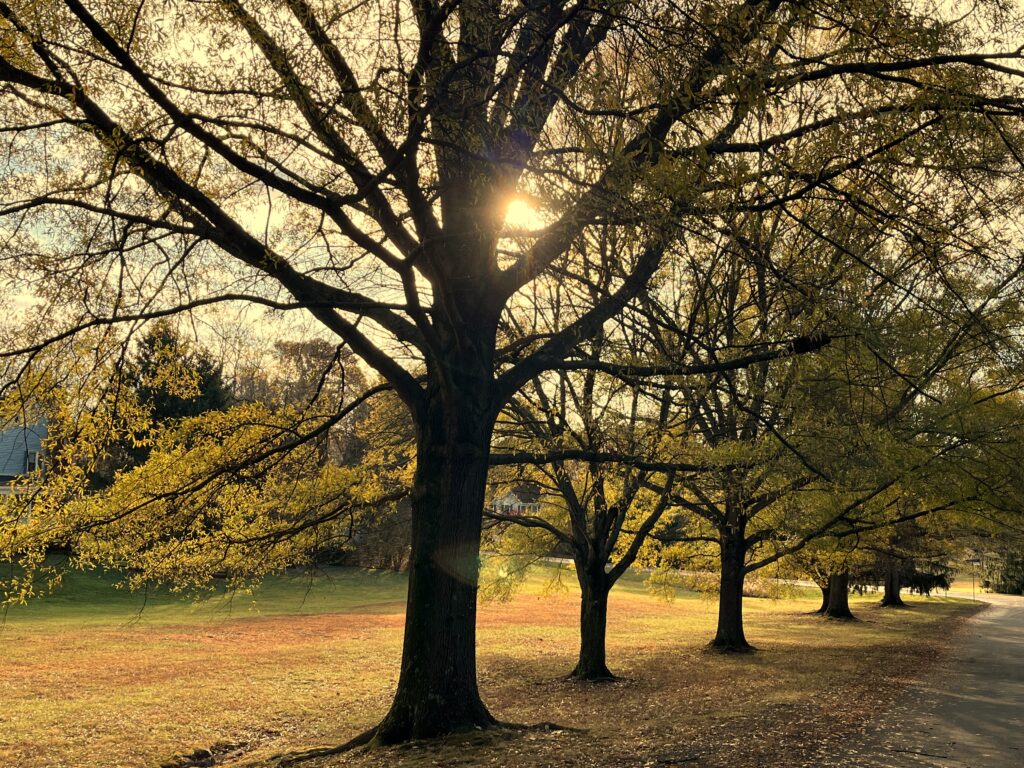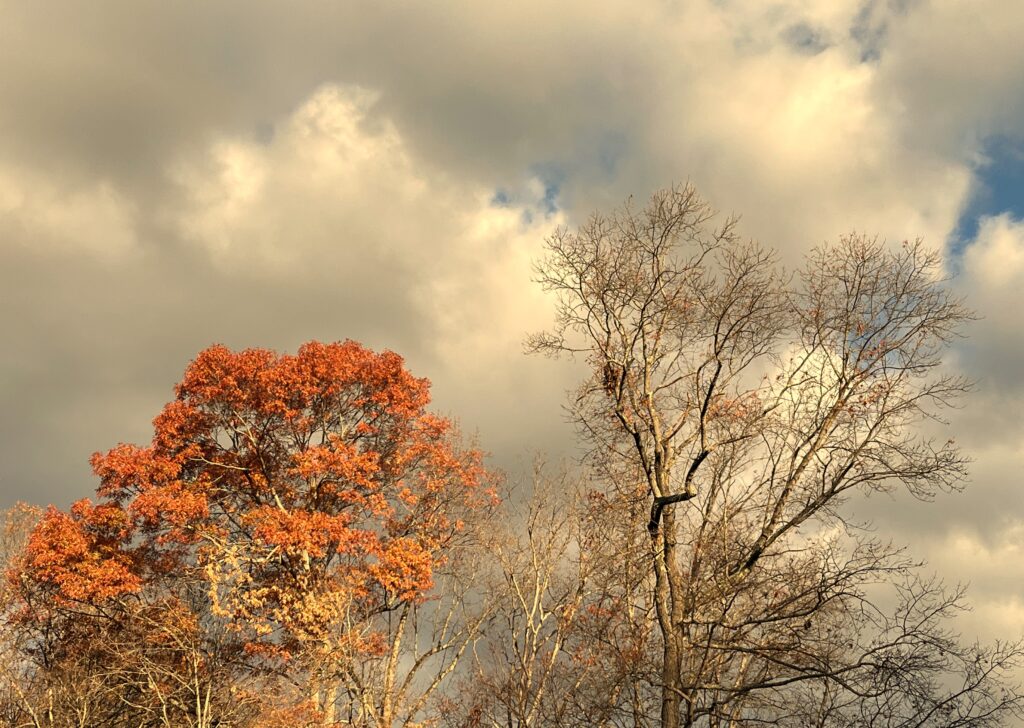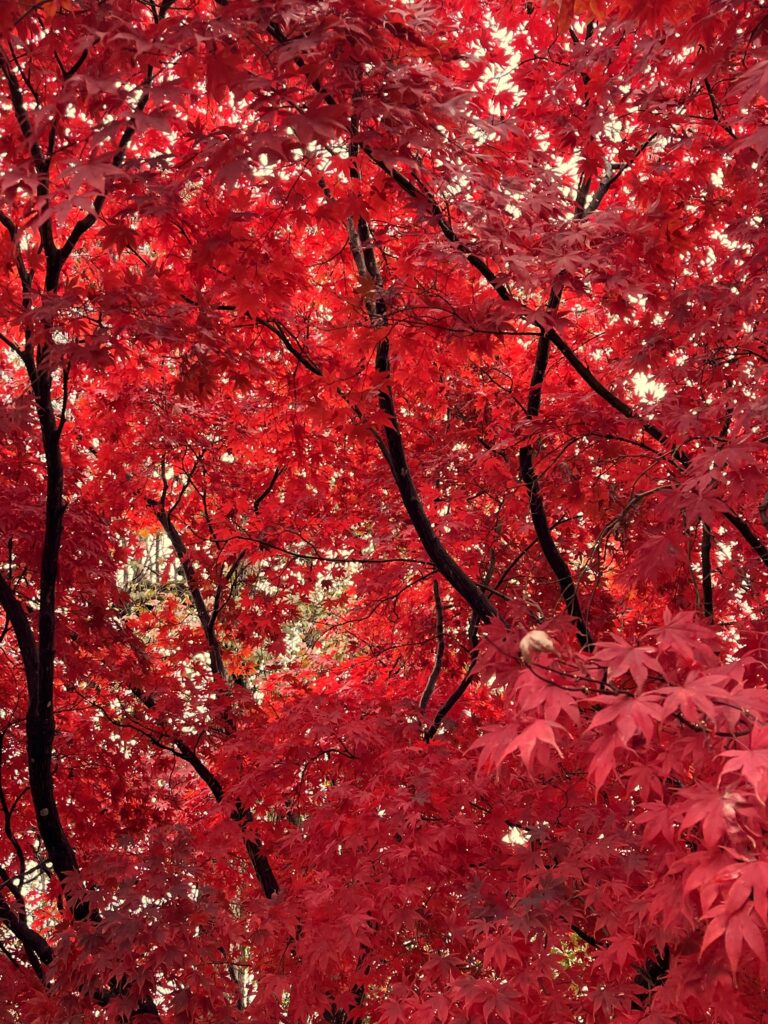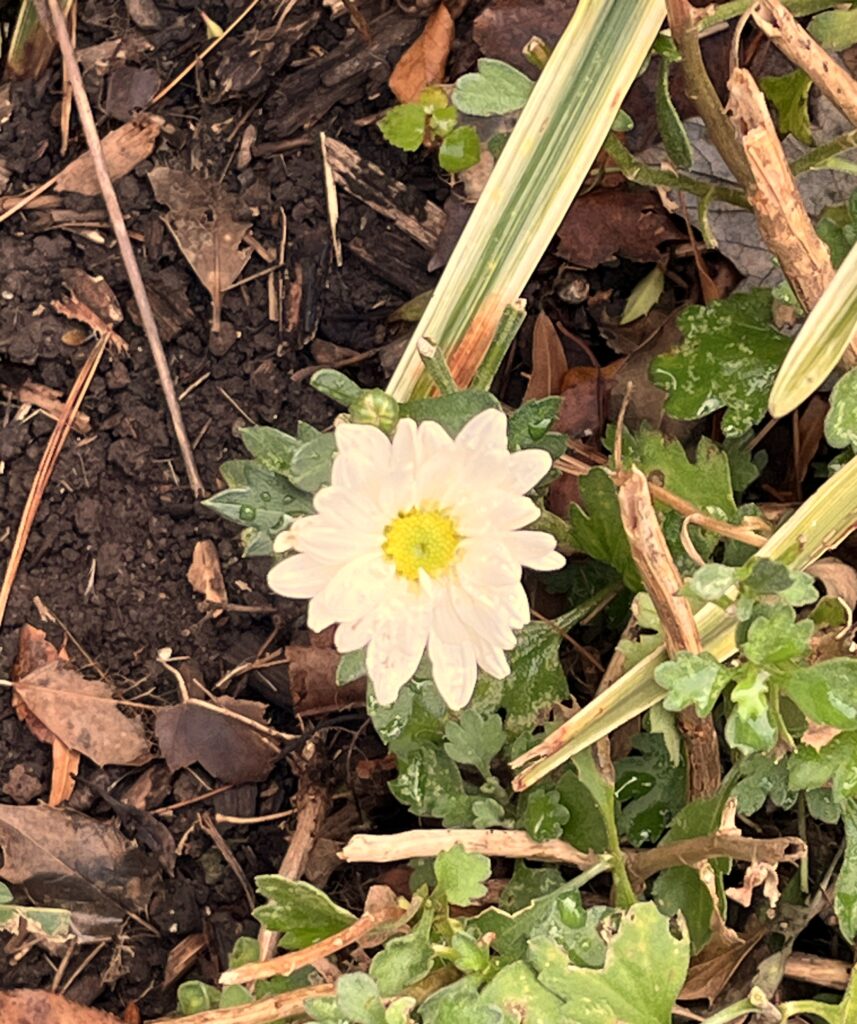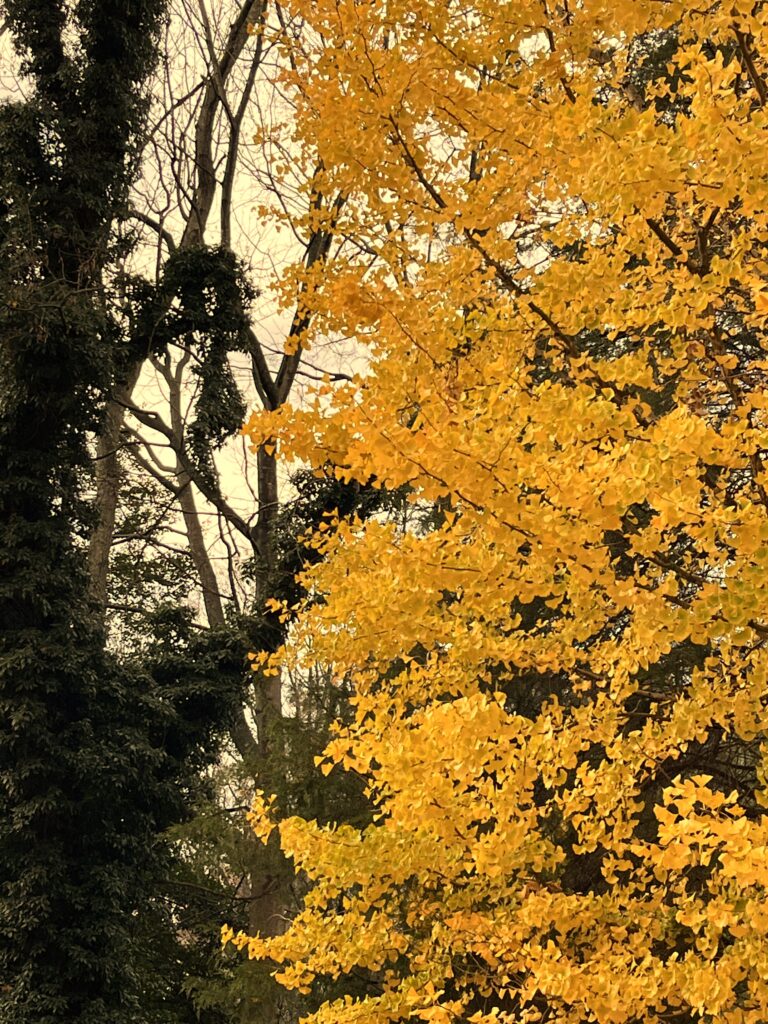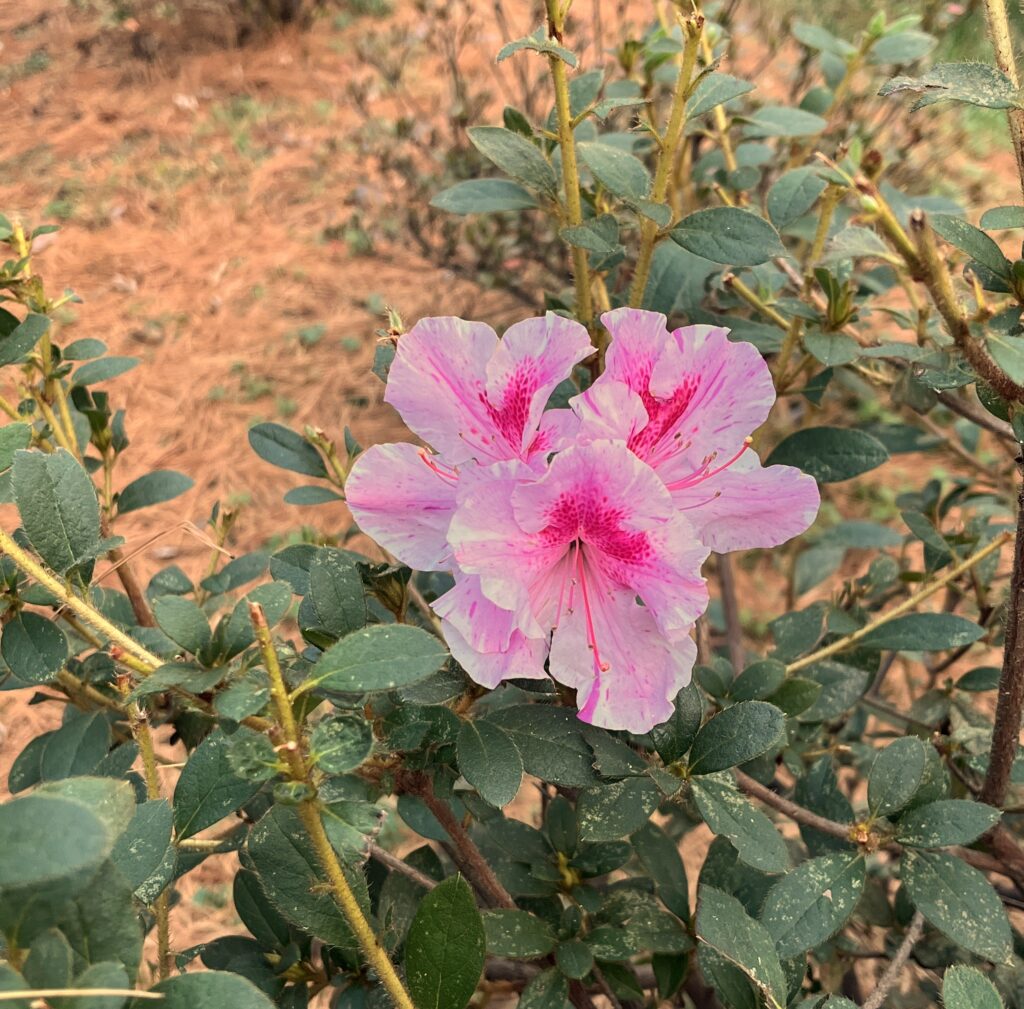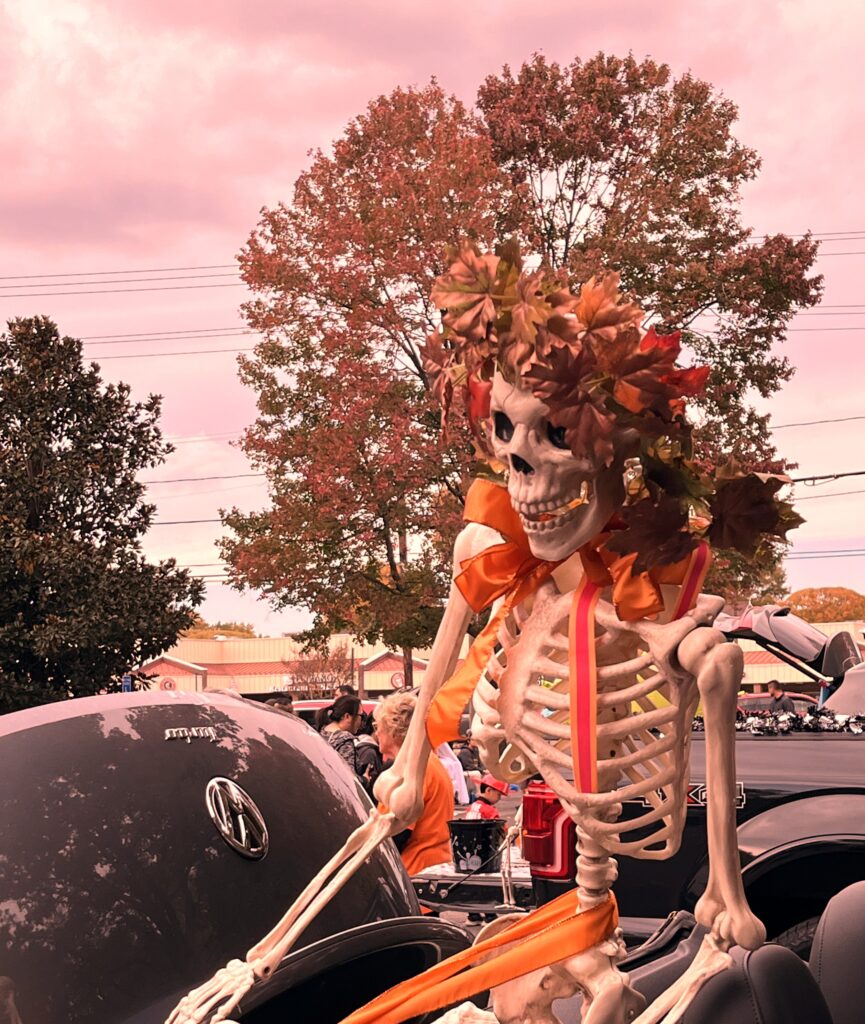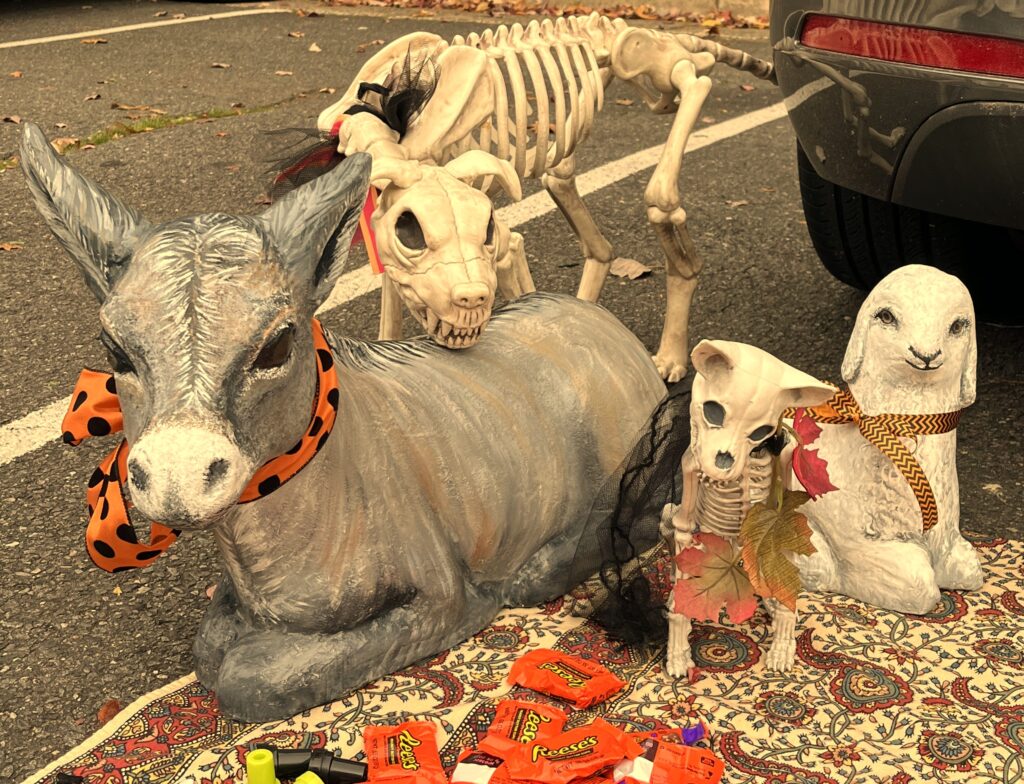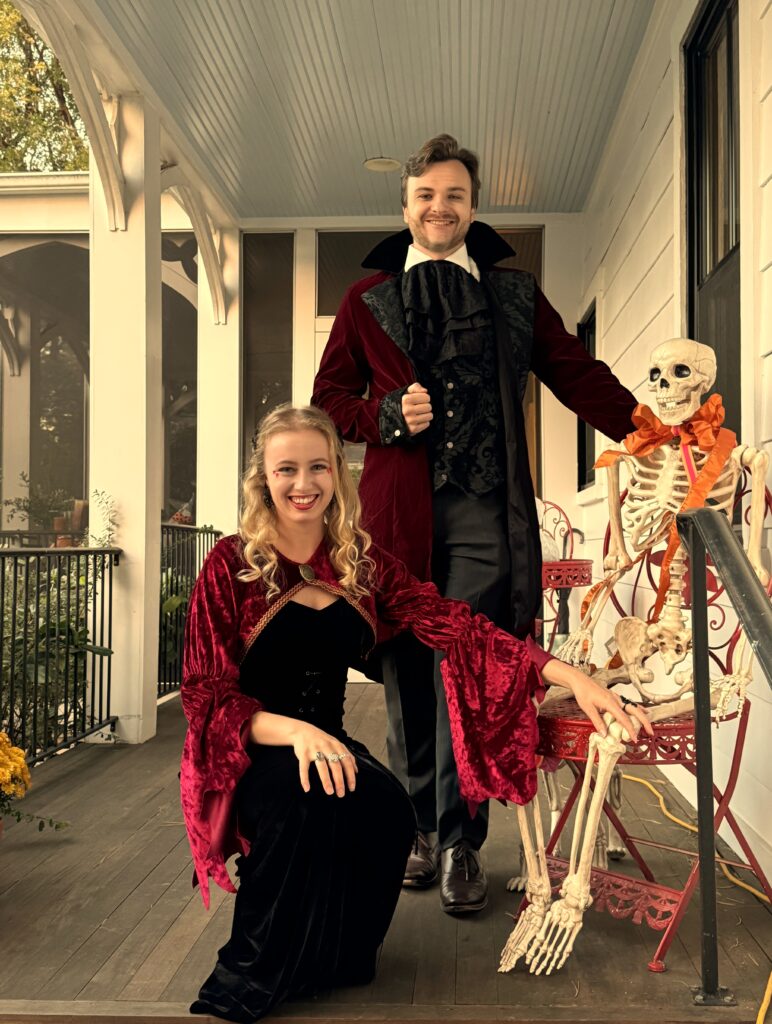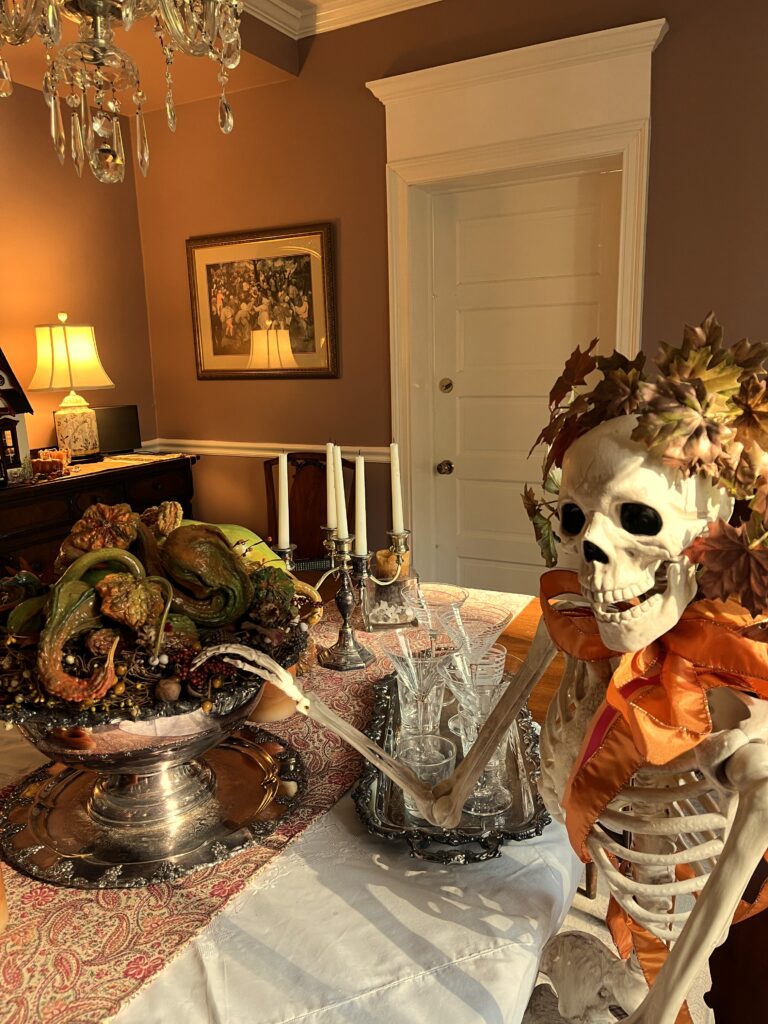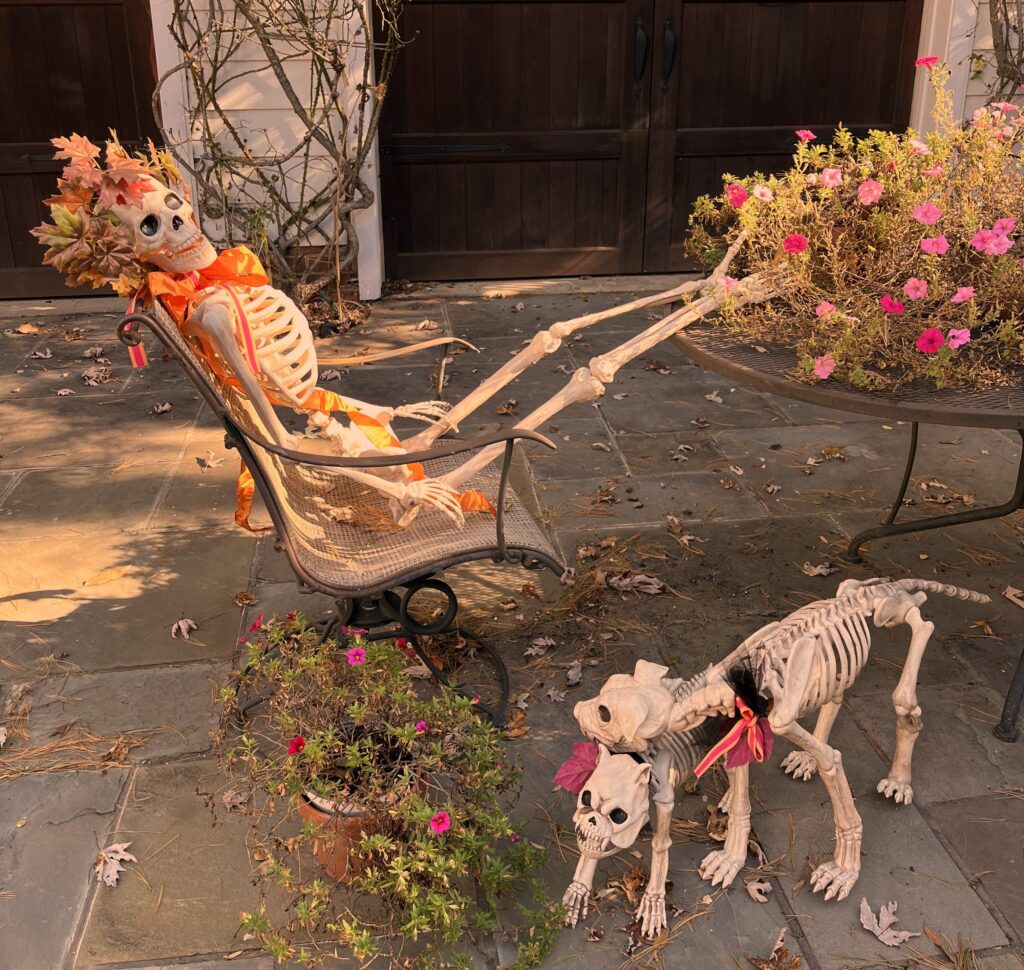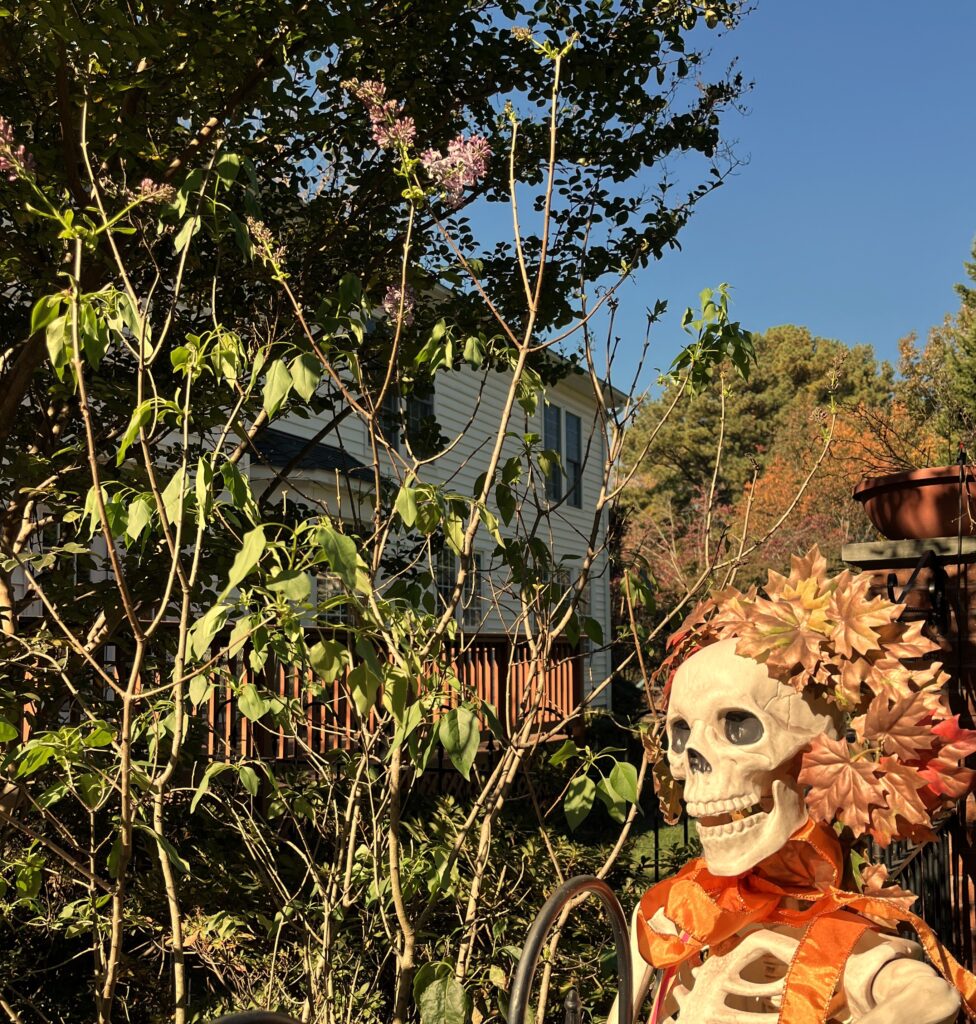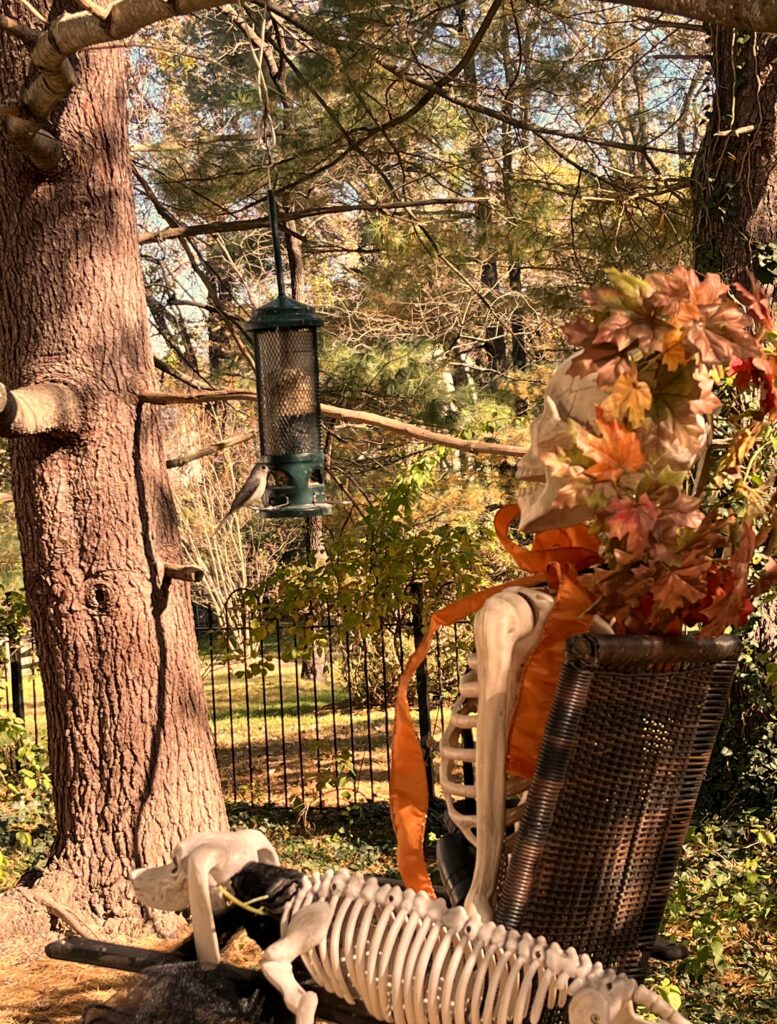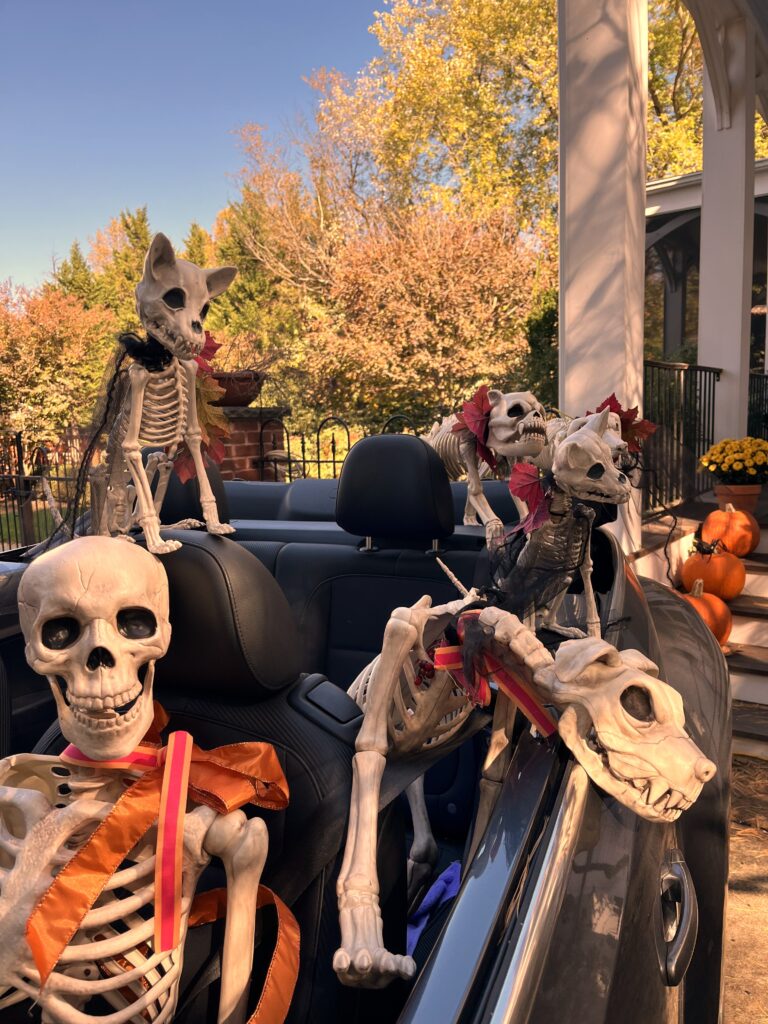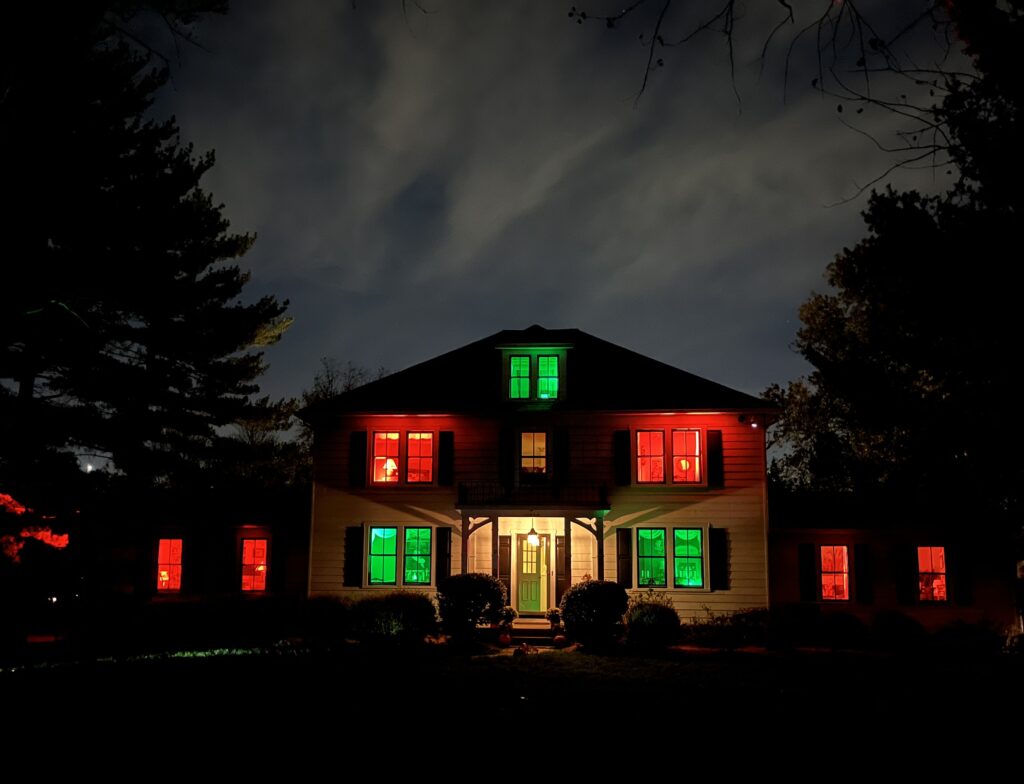As my husband made plans for maple sugaring, he learned to keep a close eye on the weather, and to be prepared to act. We’d always thought of February as the prime maple sugar month. But H learned last year that it’s the temperature, not the specific time of year, that determines the best sugaring conditions. The perfect fluctuation of temperatures, in fact, is necessary. Cold nights, when the thermometer dips below freezing, and warming, sunny days, are what gets the sap really flowing. During the second week of January, when temperatures ranged from the twenties to the forties, H tapped several sugar maples in my mother’s yard. Soon, the white pails were filling with sap. He checked them each night, emptying the liquid into a larger bucket for storage in our basement fridge.
He began the long boiling process on a weekend when he had few other projects. Every gallon of sap requires about an hour of boiling time. He’d collected about twelve gallons, and he boiled six gallons at a time. To avoid turning our kitchen into an ultra-high-humidity zone during six hours of boiling, H began the process outside on the grill. Once the amount of liquid had been reduced by about 80%, he finished the process inside. The longer the liquid is boiled, the more viscous it becomes. During this final phase, our house was filled with the heavenly scent of sugar-rich steam.
The reason that most maple sugar comes from northern locales is that the sugar content of maples is higher there. Sugar maples in northern states and Canada typically have a sap to syrup ratio of about 40-1, so that forty gallons of sap yields one gallon of syrup. Farther south, as here in Virginia, that ratio is about 70 – 1.
After the boiling process is finished, the syrup is filtered to remove any impurities.
My husband found that the sap from the earliest part of the season produced syrup that was light in color. Longer boiling does not affect the color, (unless reduced to the point of burning, of course). In taste, this early harvest was subtle. It was sugary, with only slight hints of maple flavor.
The late-season sap resulted in syrup that was a dark mahogany color. The flavor was bright and robust. It was pure maple essence. It takes more sap, and more boiling time for maple sugaring here in Virginia than in western New York, but the end result, we know now, is equally tasty. Mid-Atlantic maples can produce a liquid gold as fine as their Yankee cousins.
Hours spent around the big pot of bubbling sap, inhaling the sweetness of the steam, are apt to inspire contemplation. “Amazing, isn’t it, that we can extract this liquid from trees in our own yard and turn it into this great-tasting stuff,” my husband remarked. “And it’s even more amazing that the sap is there in the first place. There’s enough to nourish the tree, and plenty left over for us. If God were to boast about his wonders, this should be included.”
I agreed, and the biblical conversation between God and Job immediately came to mind:
Who created a channel for the torrents of rain? Who laid out the path for the lightning?
Who makes the rain fall on barren land, in a desert where no one lives?
Who sends rain to satisfy the parched ground and make the tender grass spring up?
Does the rain have a father? Who gives birth to the dew?
Who is the mother of the ice? Who gives birth to the frost from the heavens? (Job 38: 25- 29, New Living Translation)
God directs Job’s attention to his supreme authority over the skies, the seas, over light and darkness, and to the unique characteristics of his many, fantastically varied creatures, including lions and goats, the wild donkey, the ox, the horse and the eagle. The miracle of maple syrup could well be included among these marvels, it seems to me. Perhaps in words like these:
Who commands and compels the life-blood of the trees of the forest? Who sets the sweet sap rising and flowing in the maples? Who sends it forth to nurture and bless the woodpecker and the shepherd?
So yes, every taste of our homemade maple syrup is yet another reminder of the bounty of God’s gifts. It’s best enjoyed, in our opinion, over buckwheat pancakes made from the Cartwright family recipe. Our syrup may be from Southern trees, but my husband’s sugar-making experience is rooted in the wilds of upstate New York. The seeds were planted long ago during his first family visit to the remote Maple Tree Inn. One of life’s sweet pleasures still flourishes, across the miles and years. Grandpa Stan would be proud.

